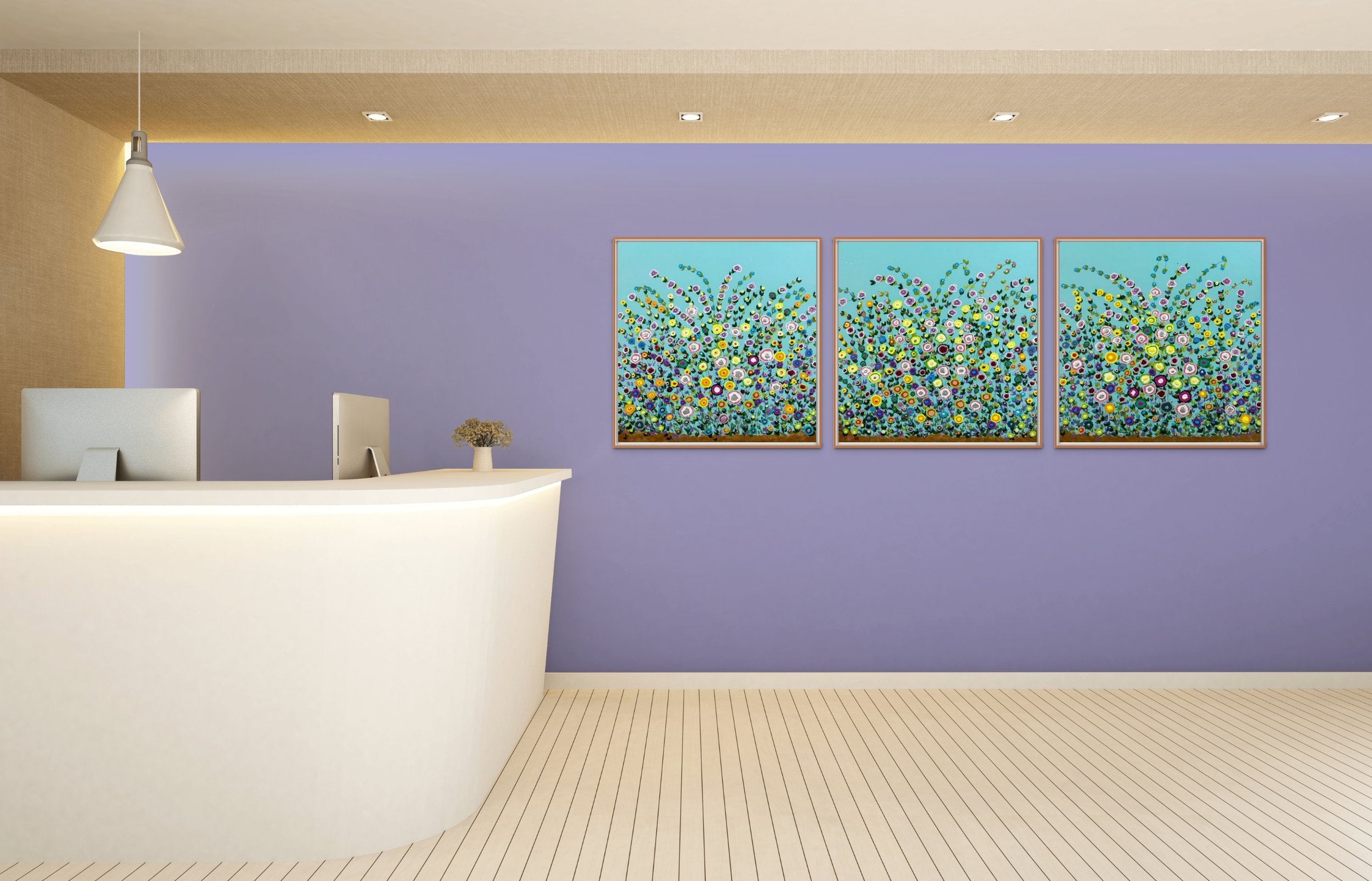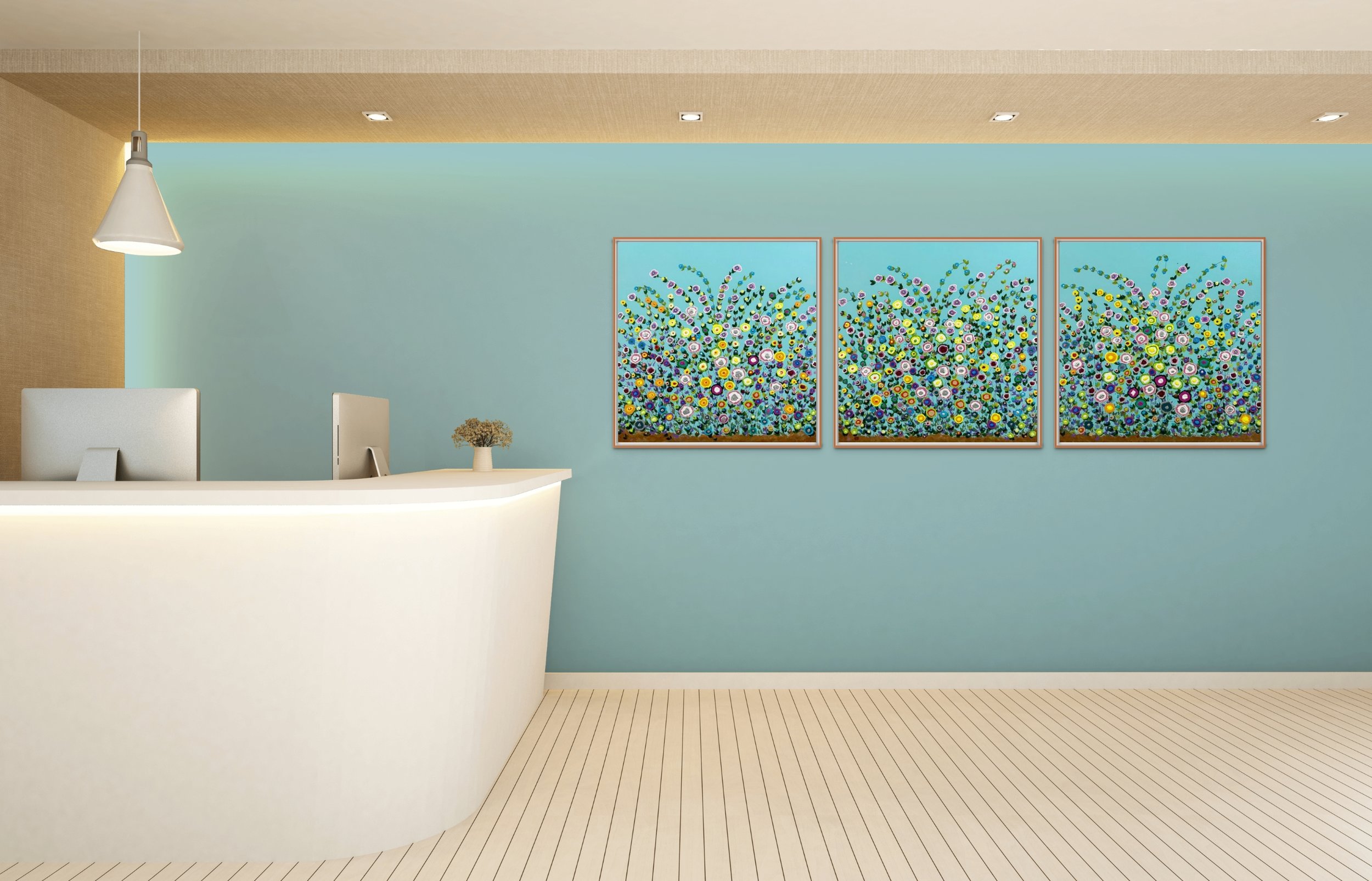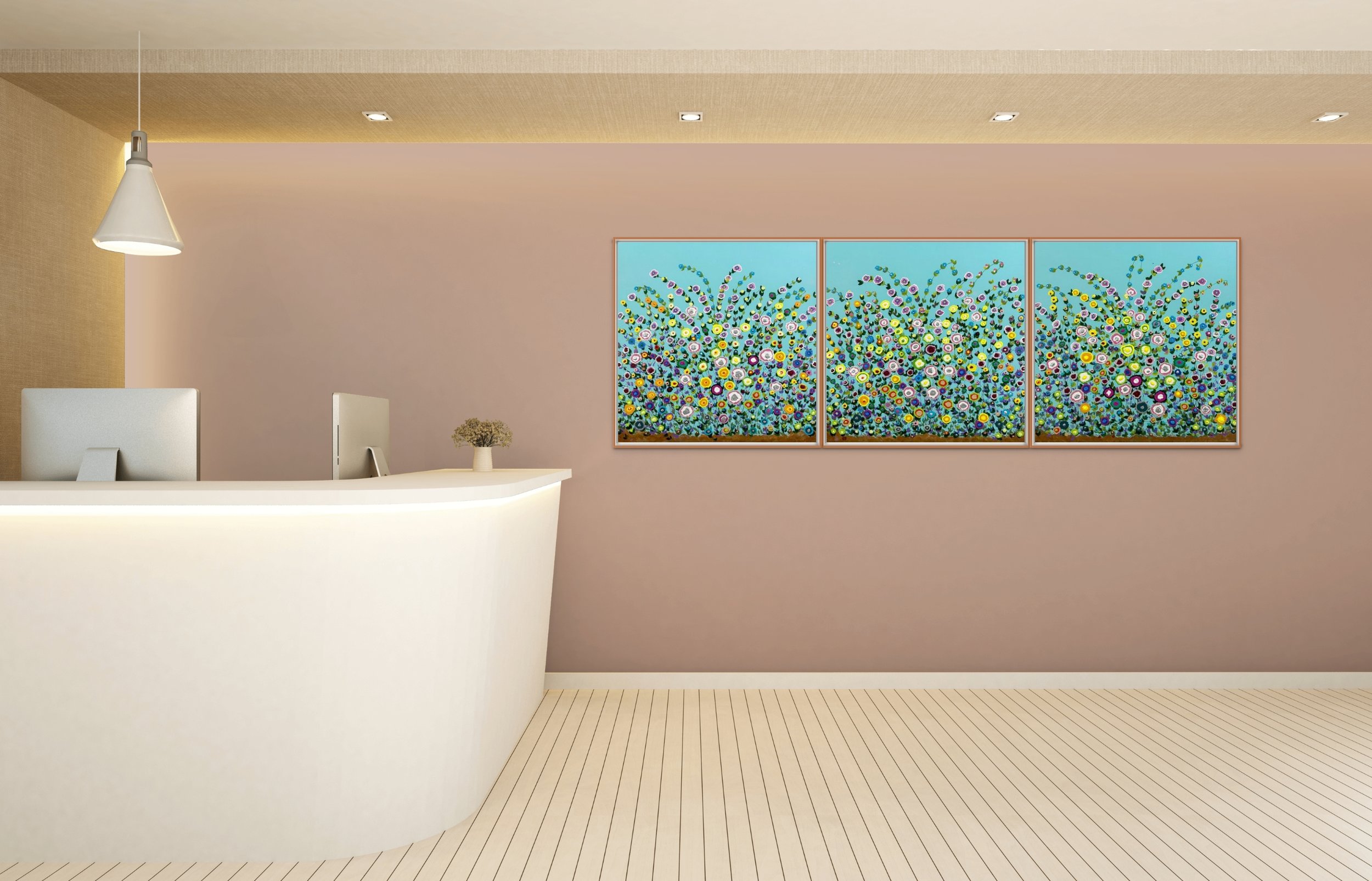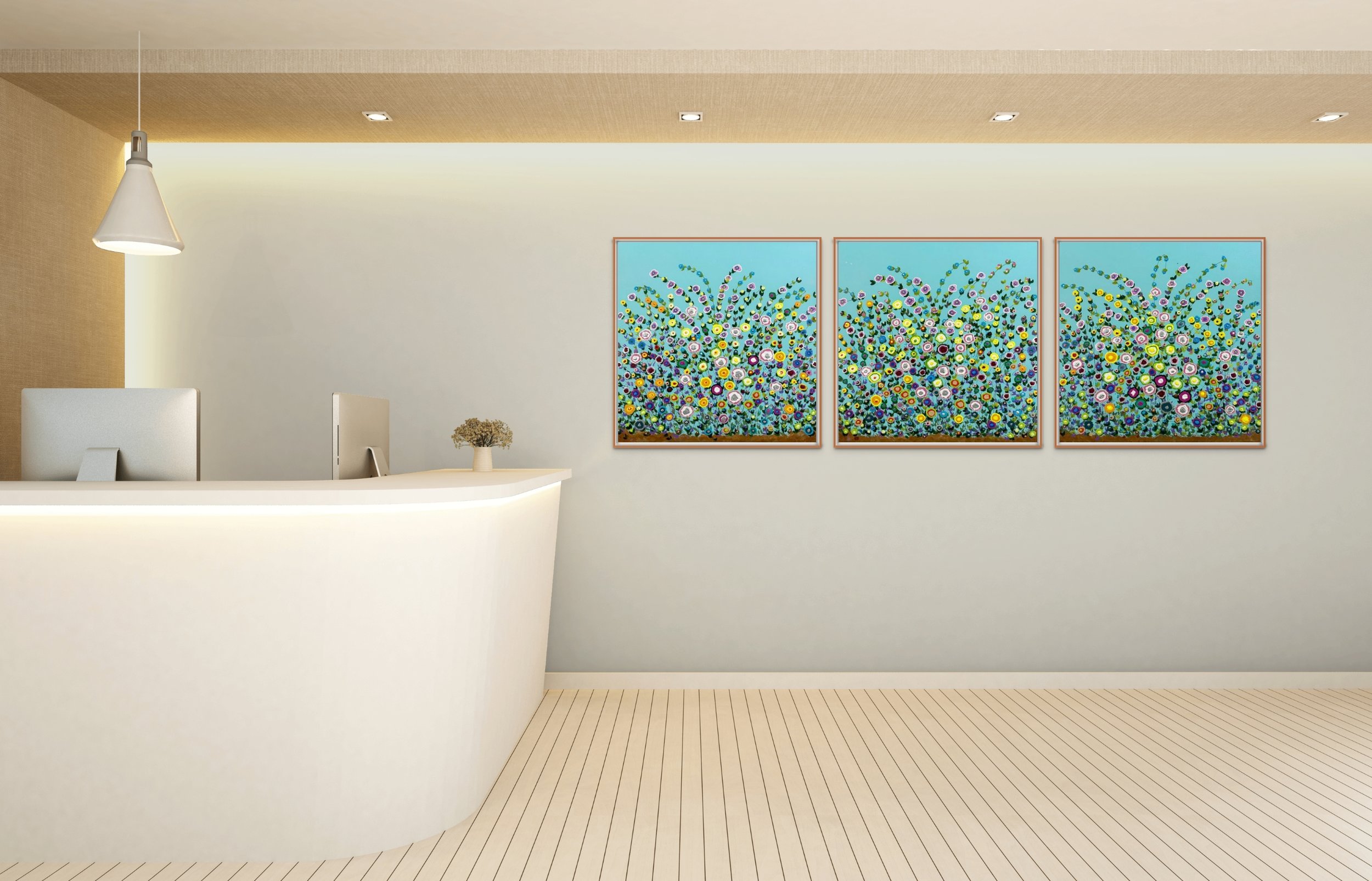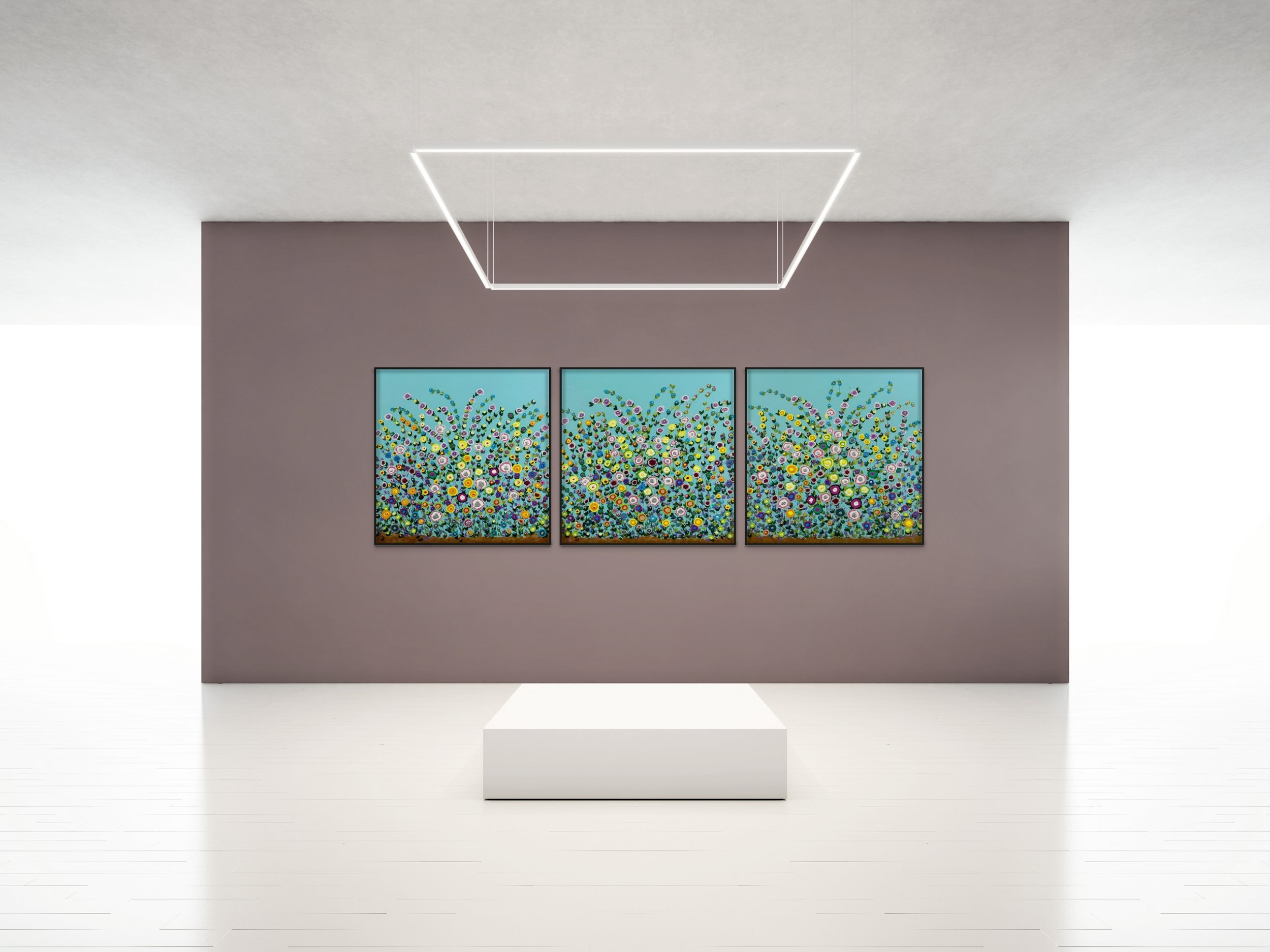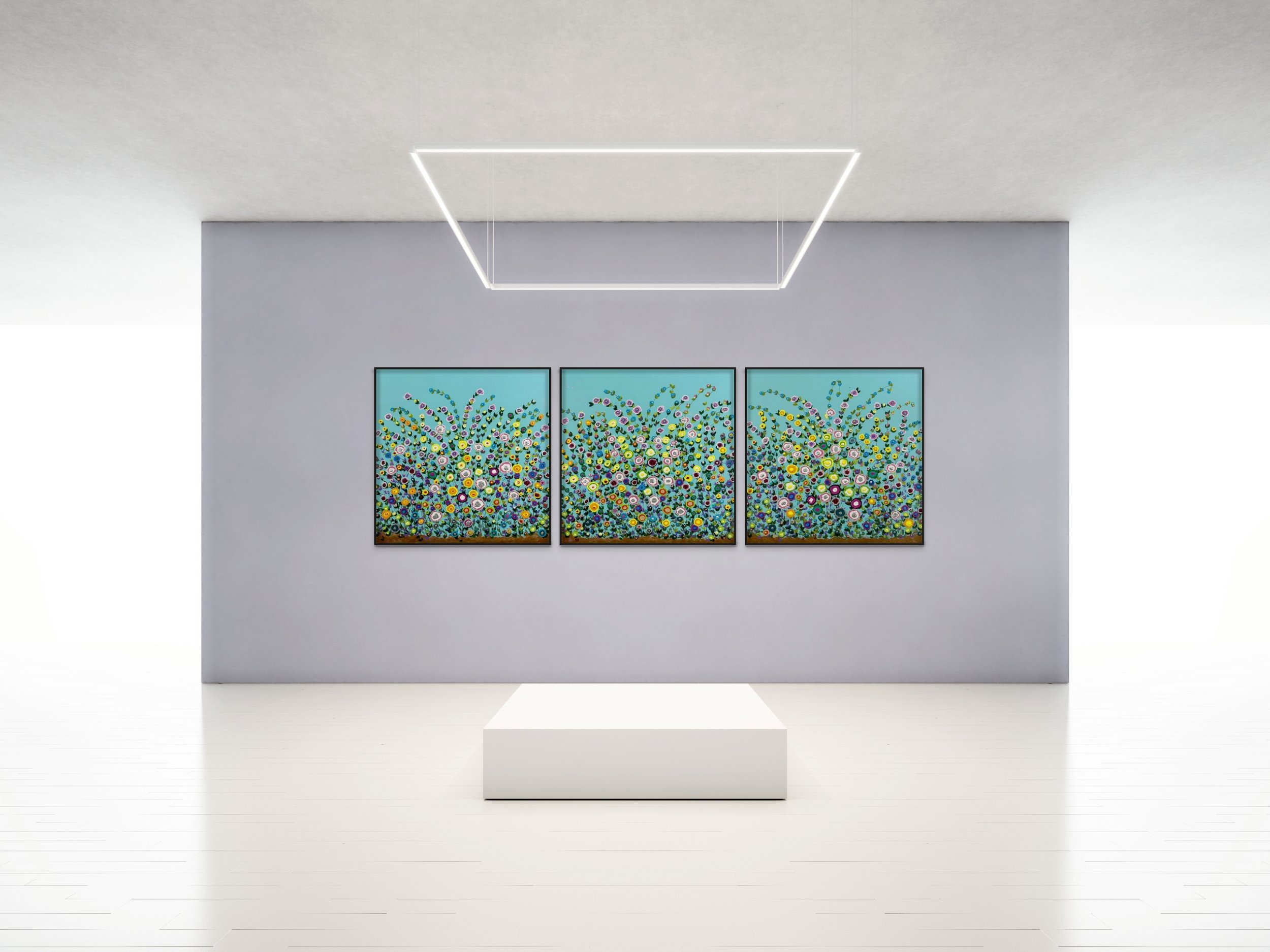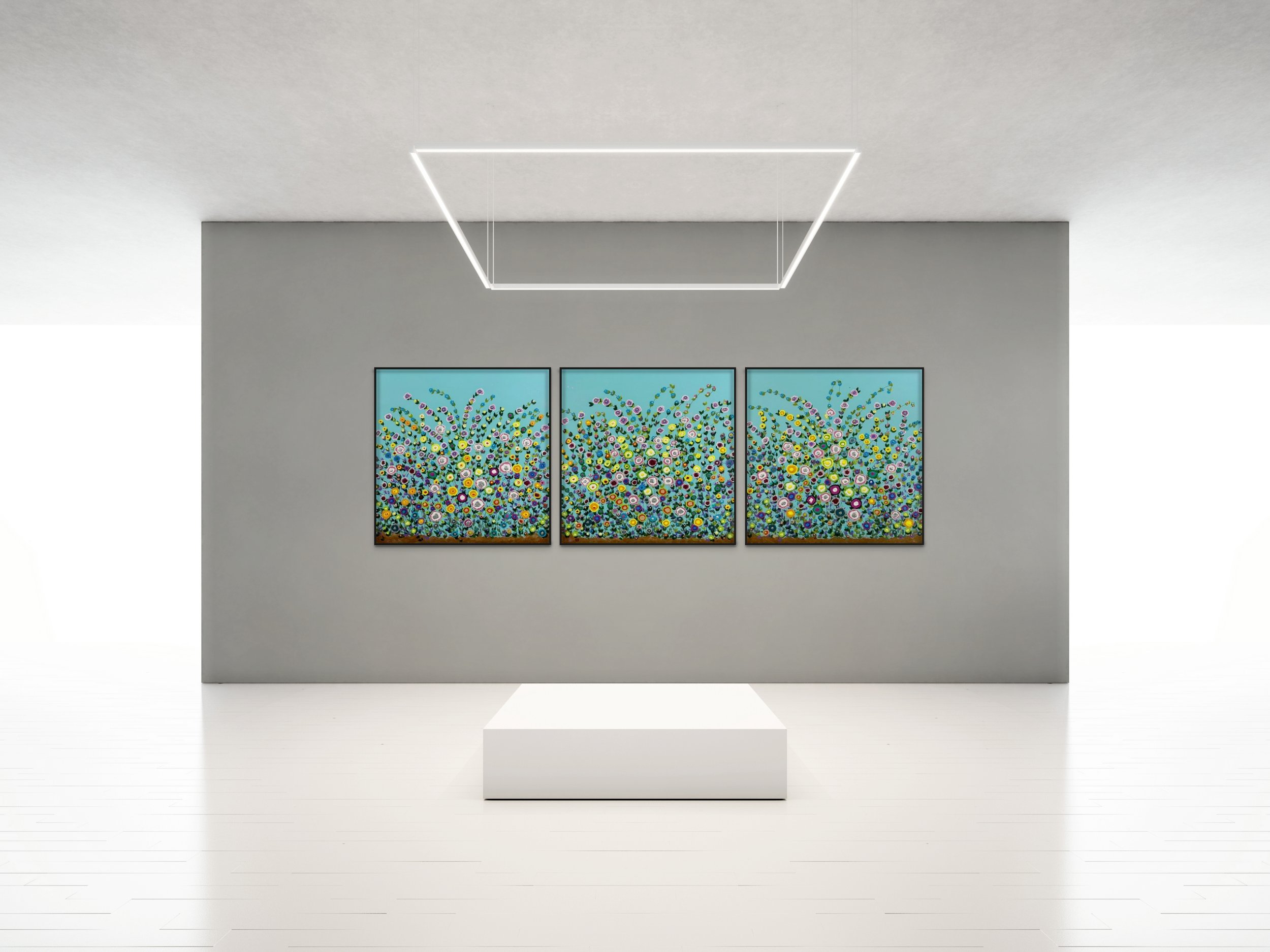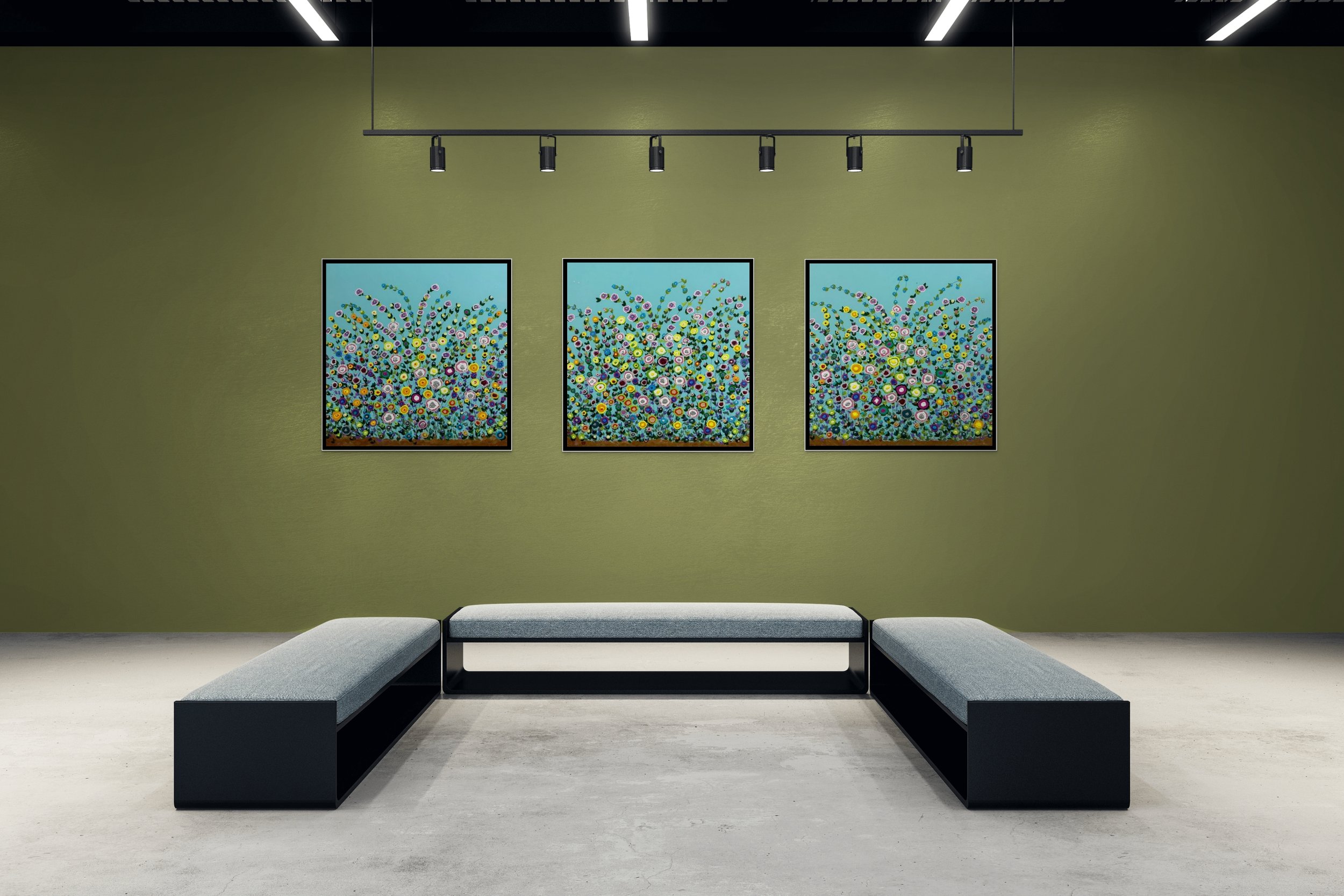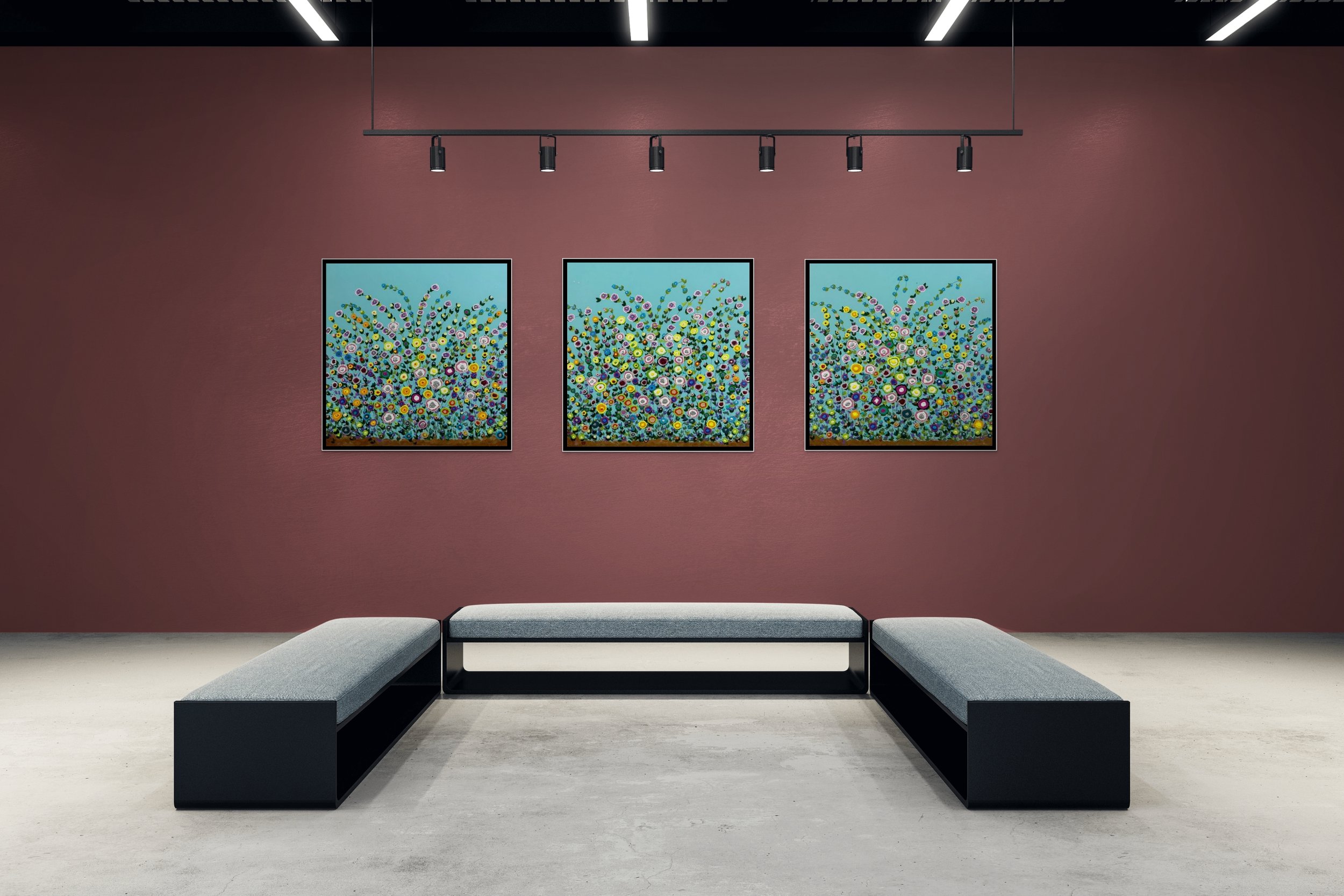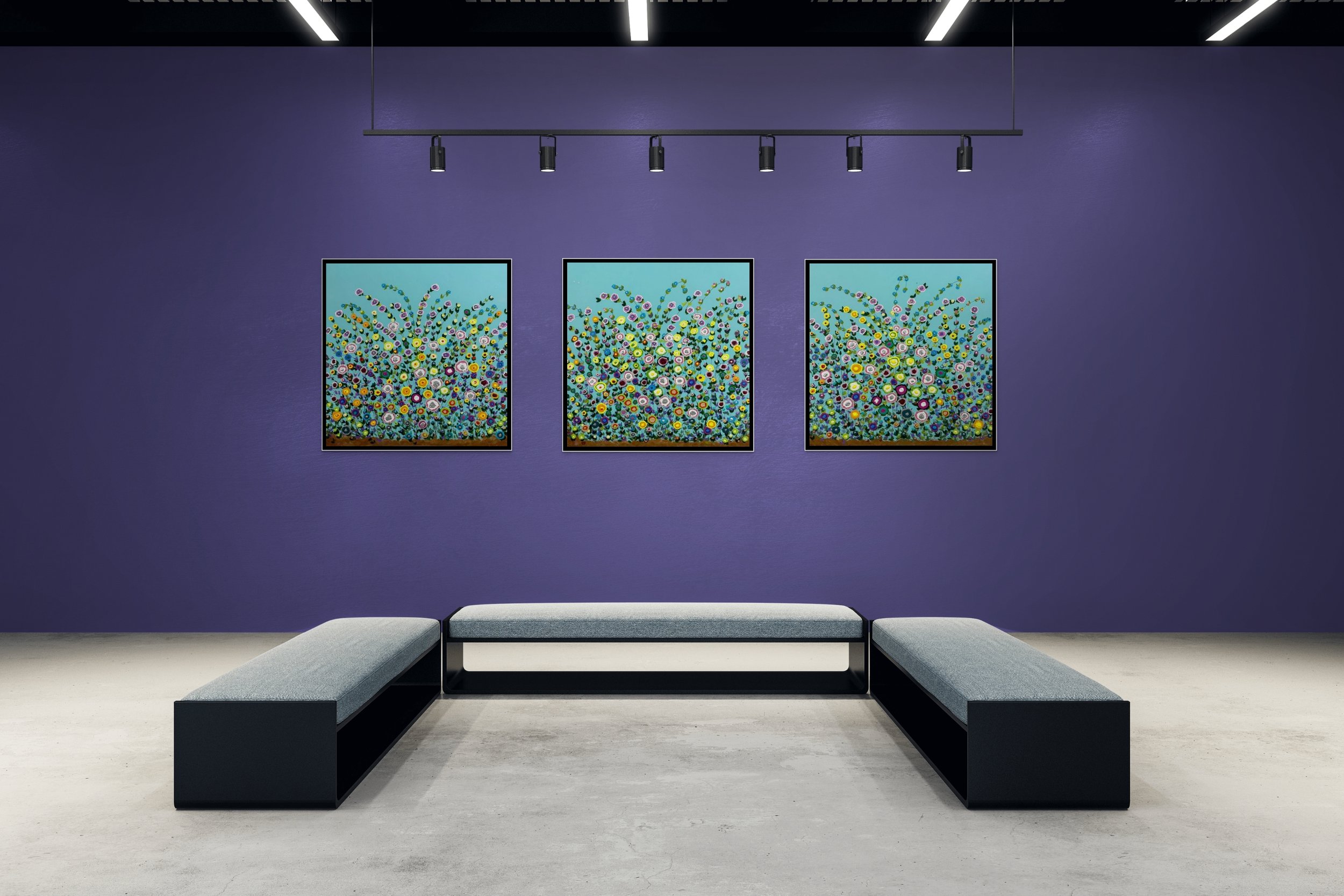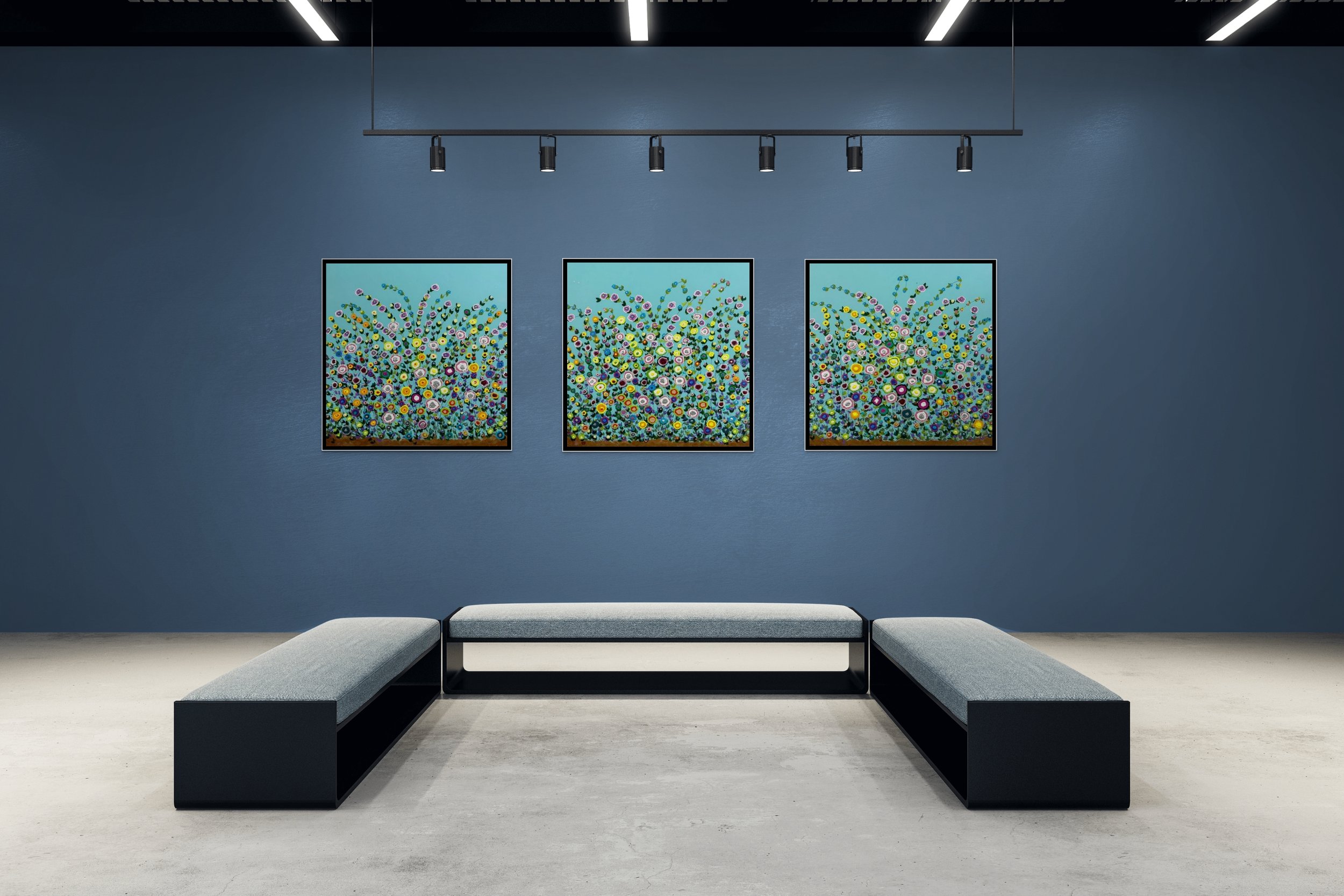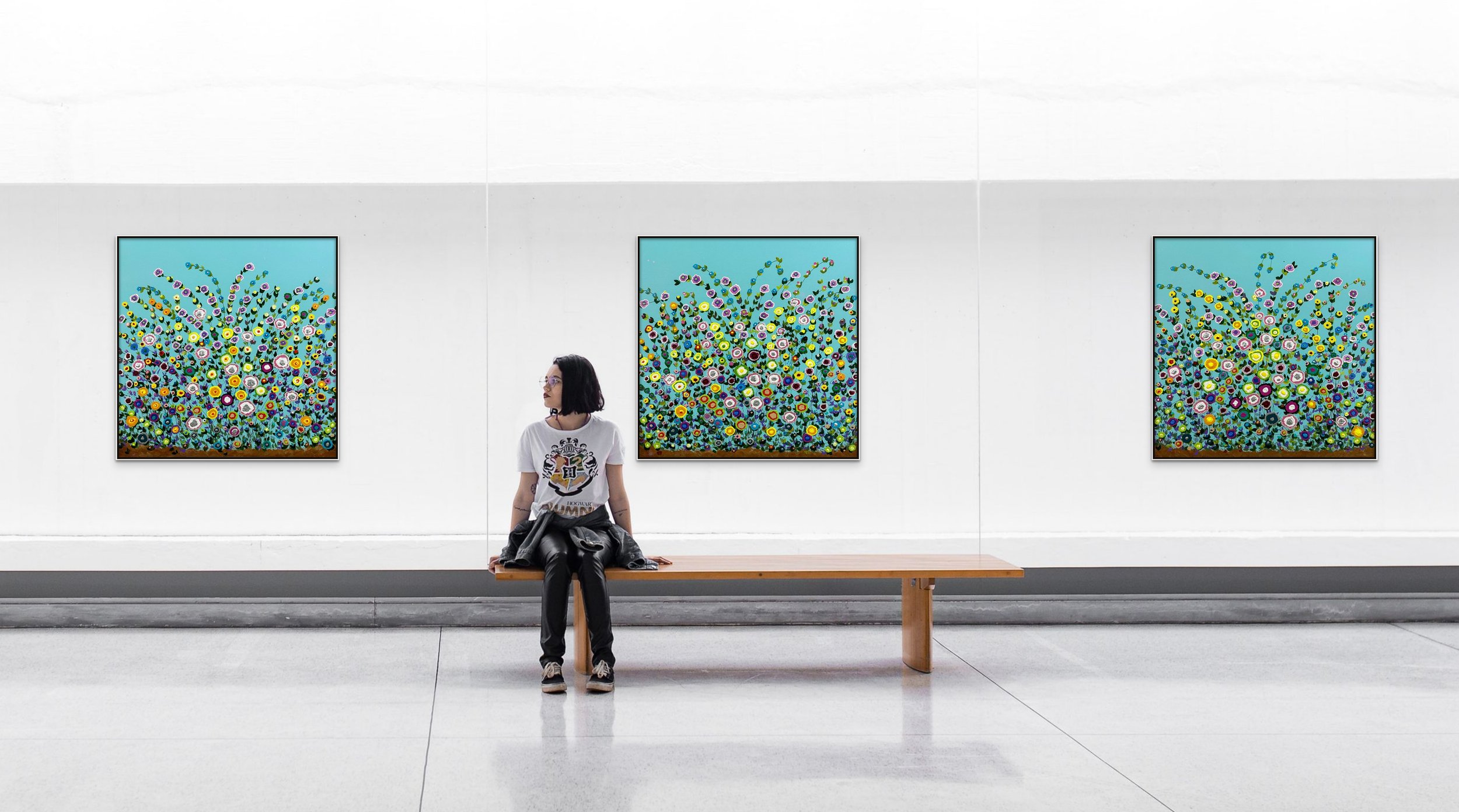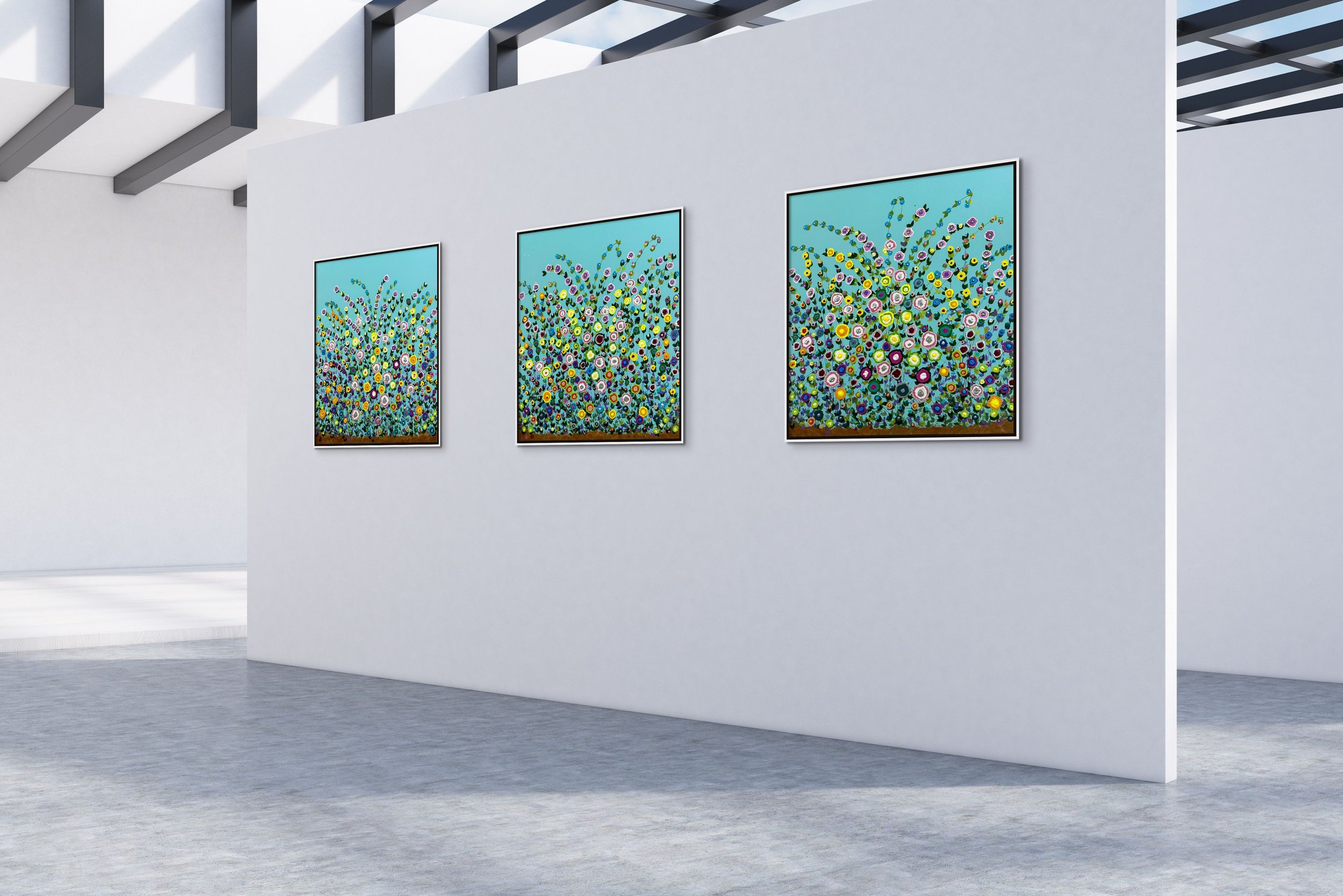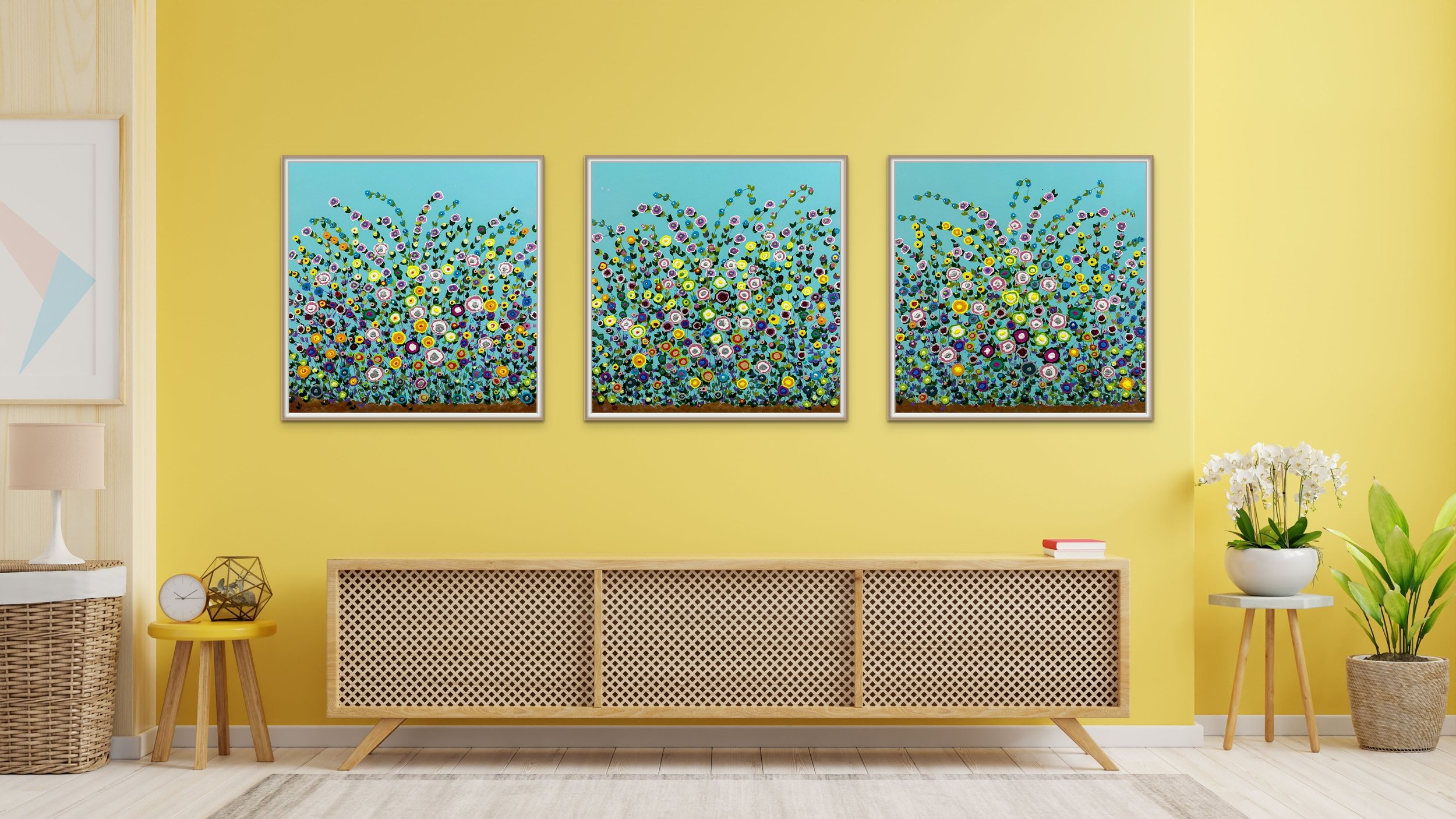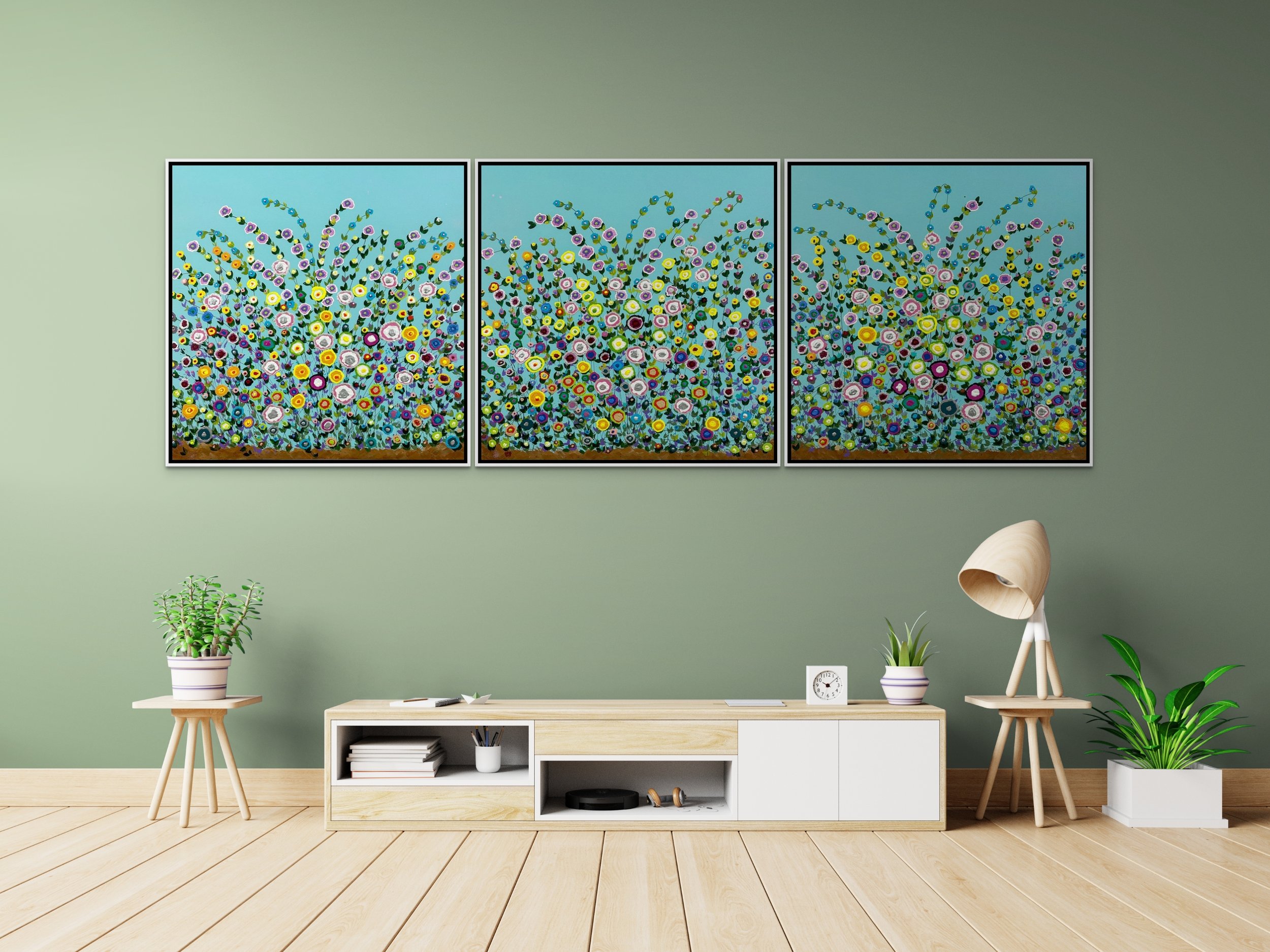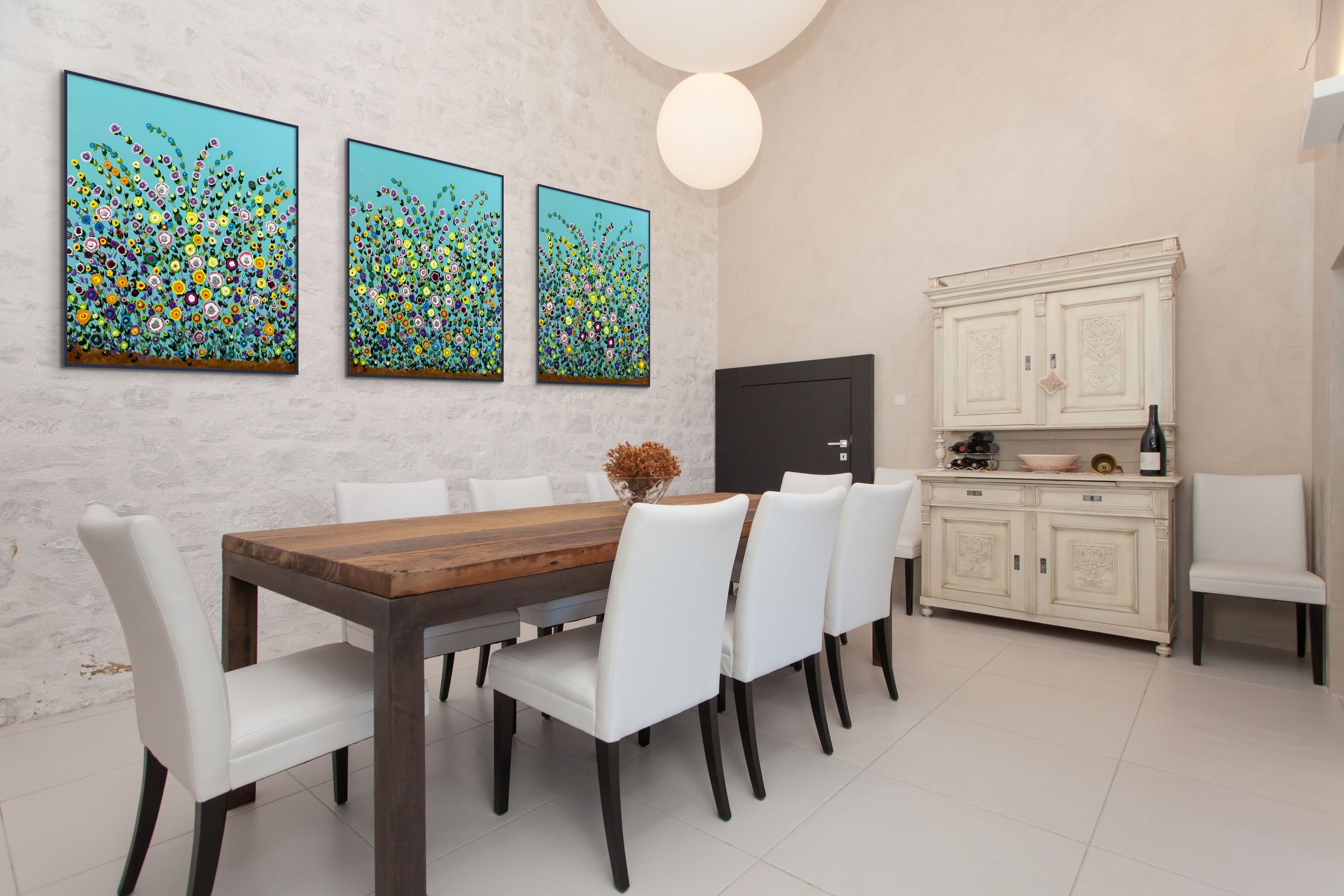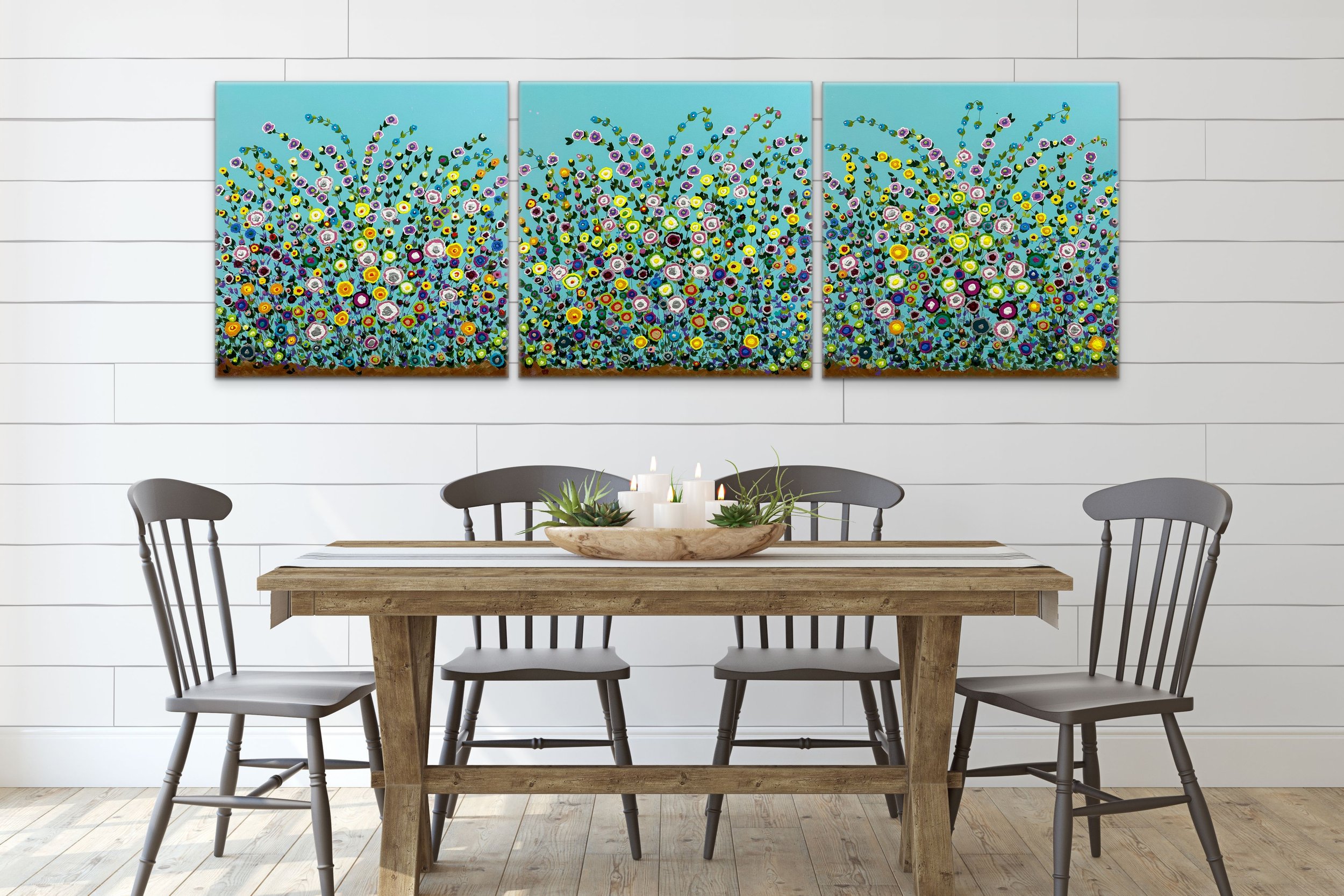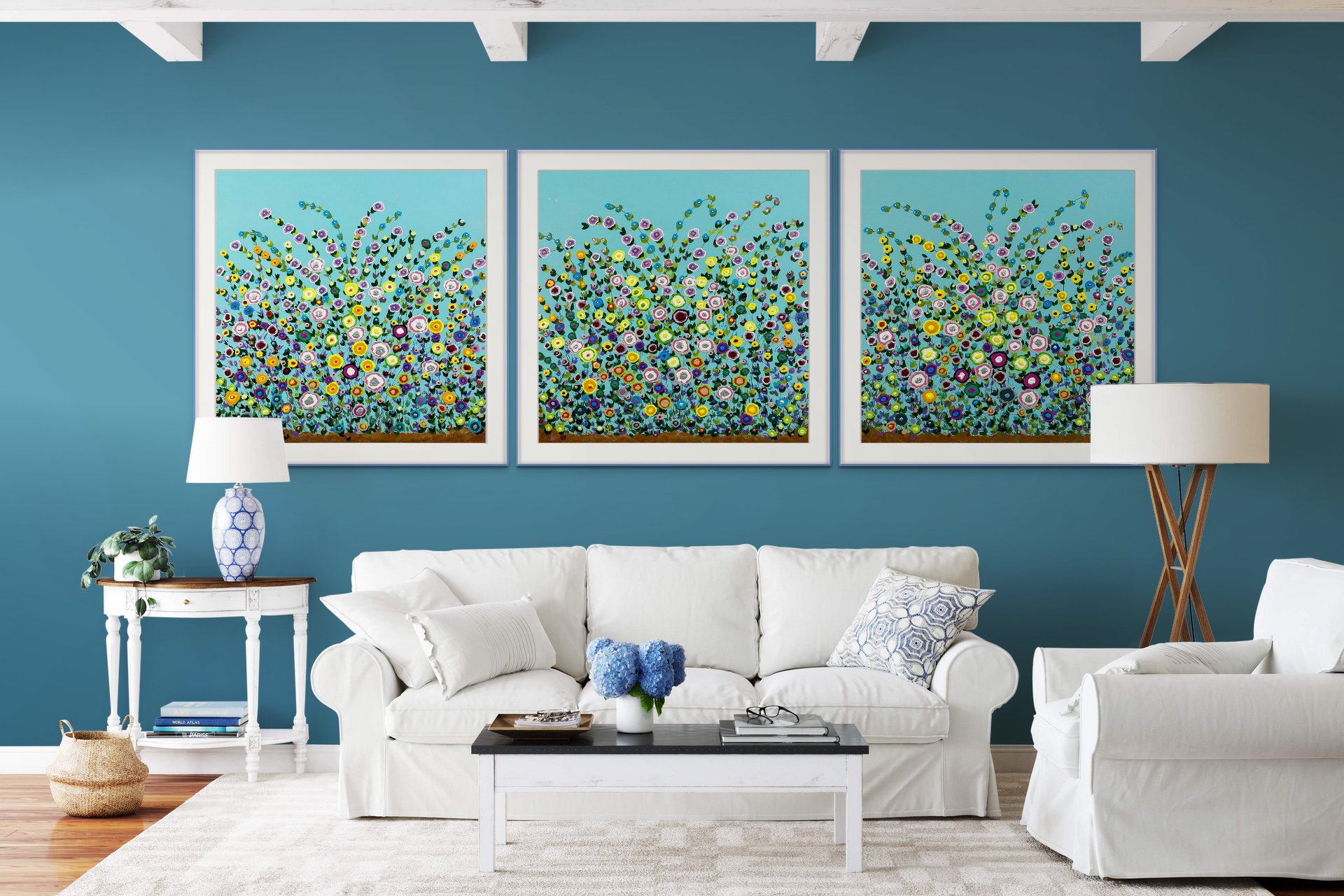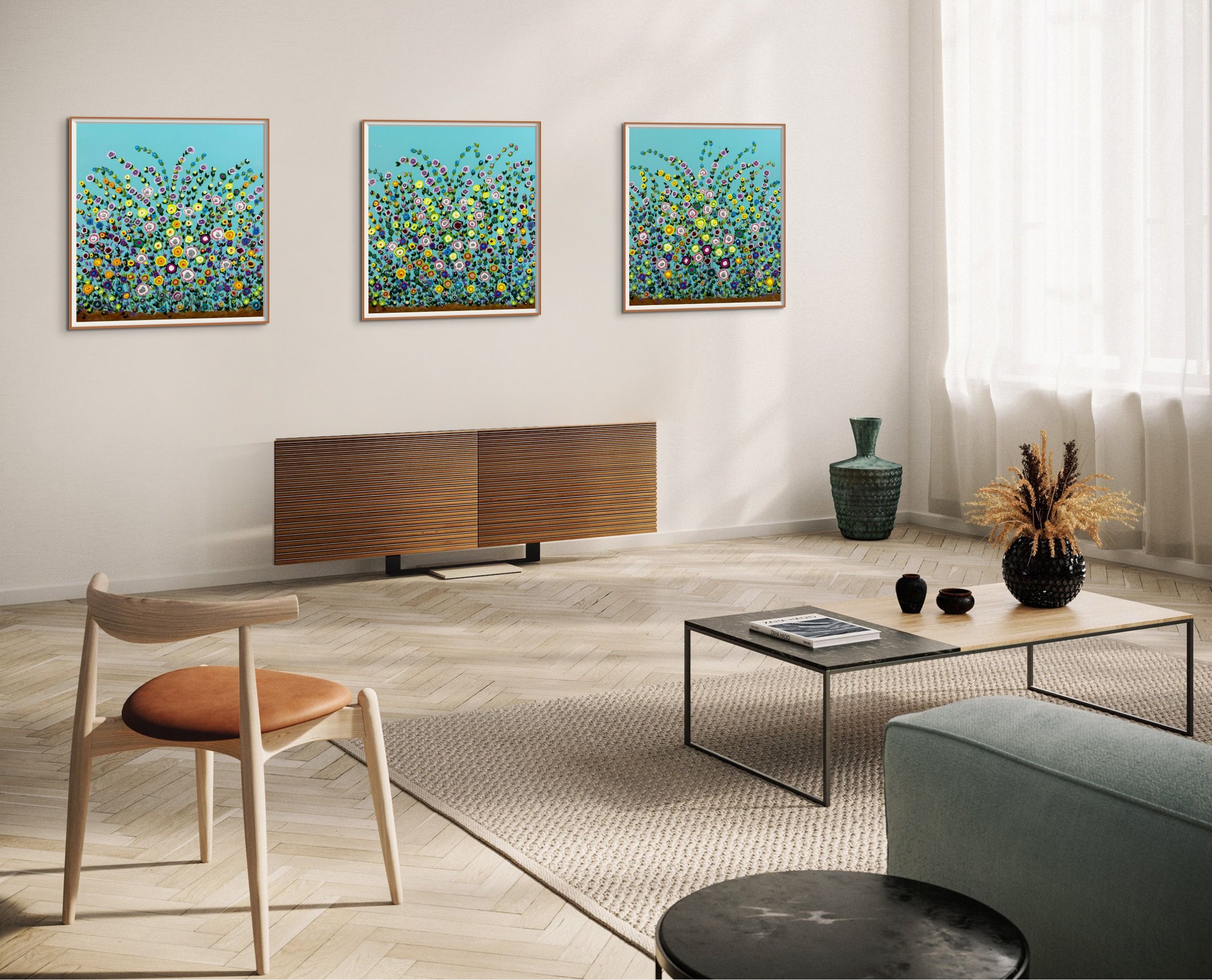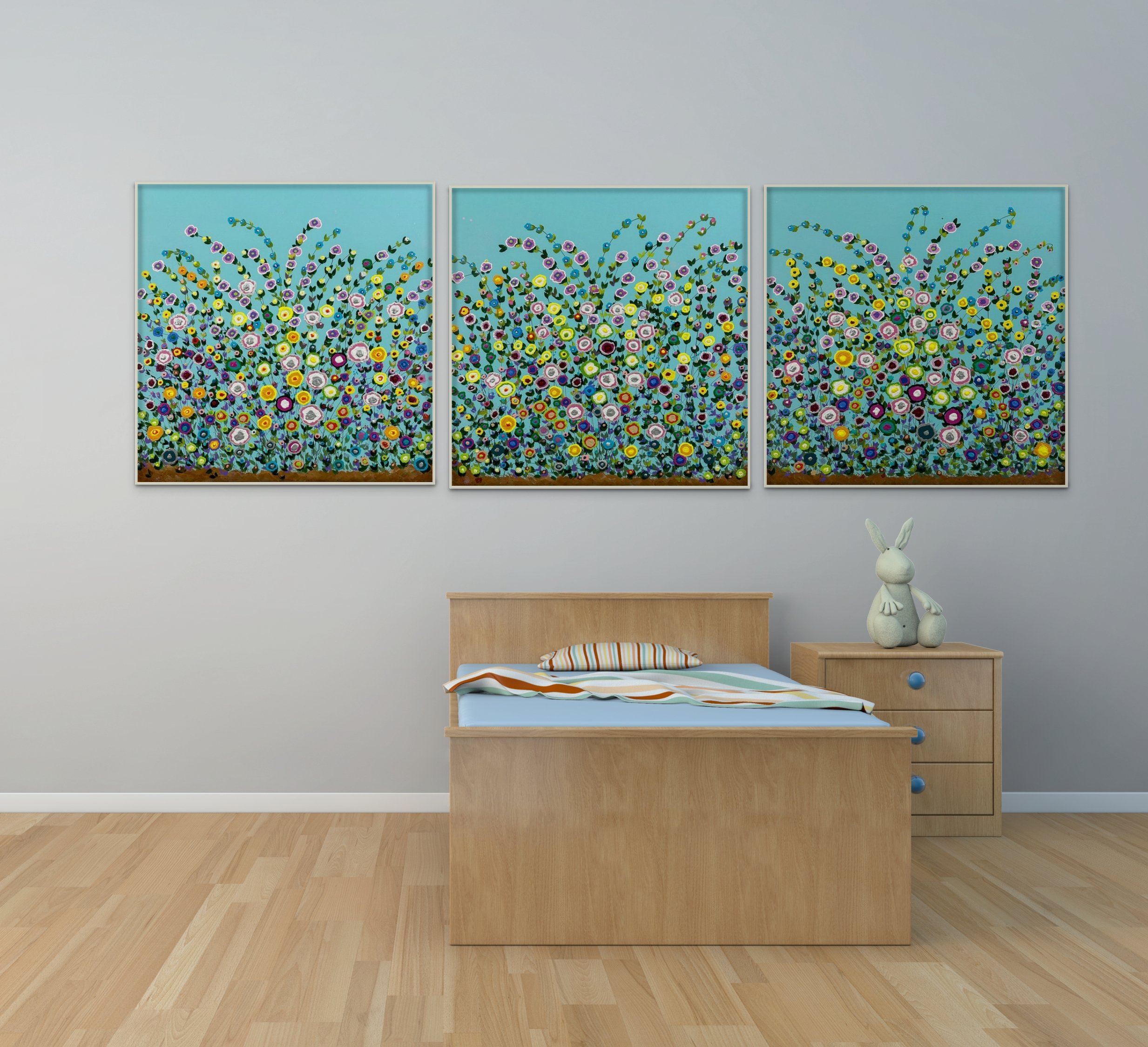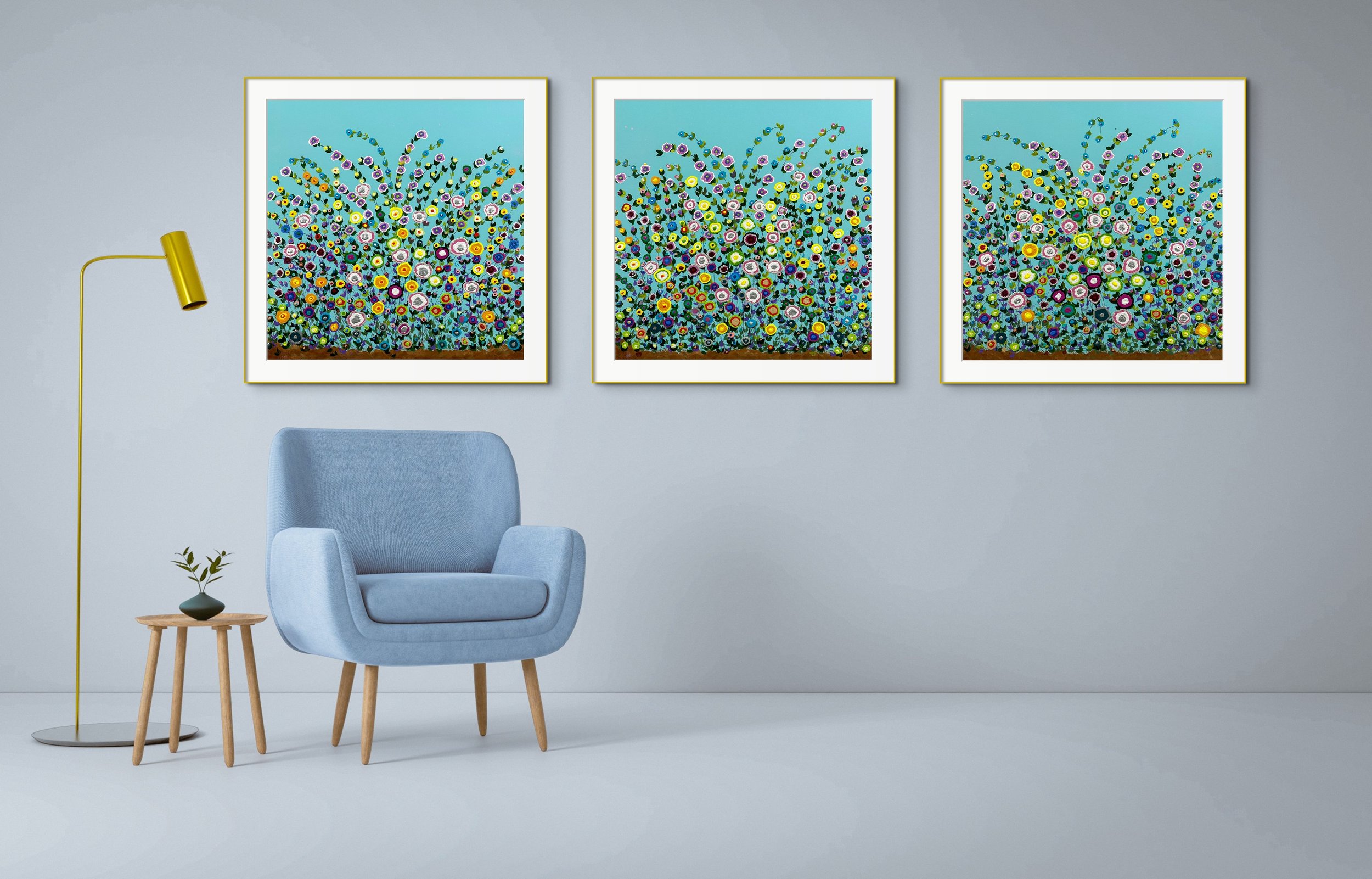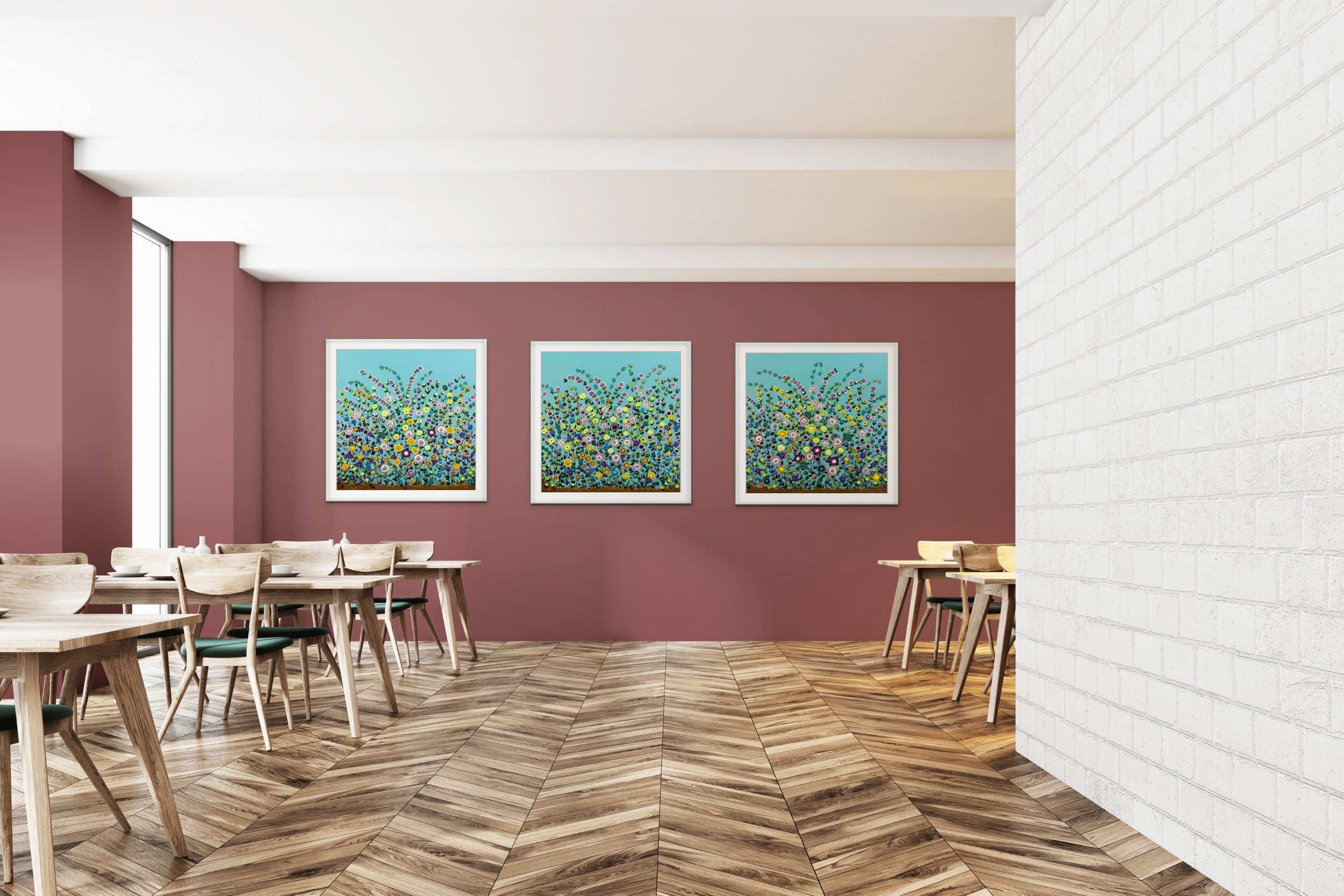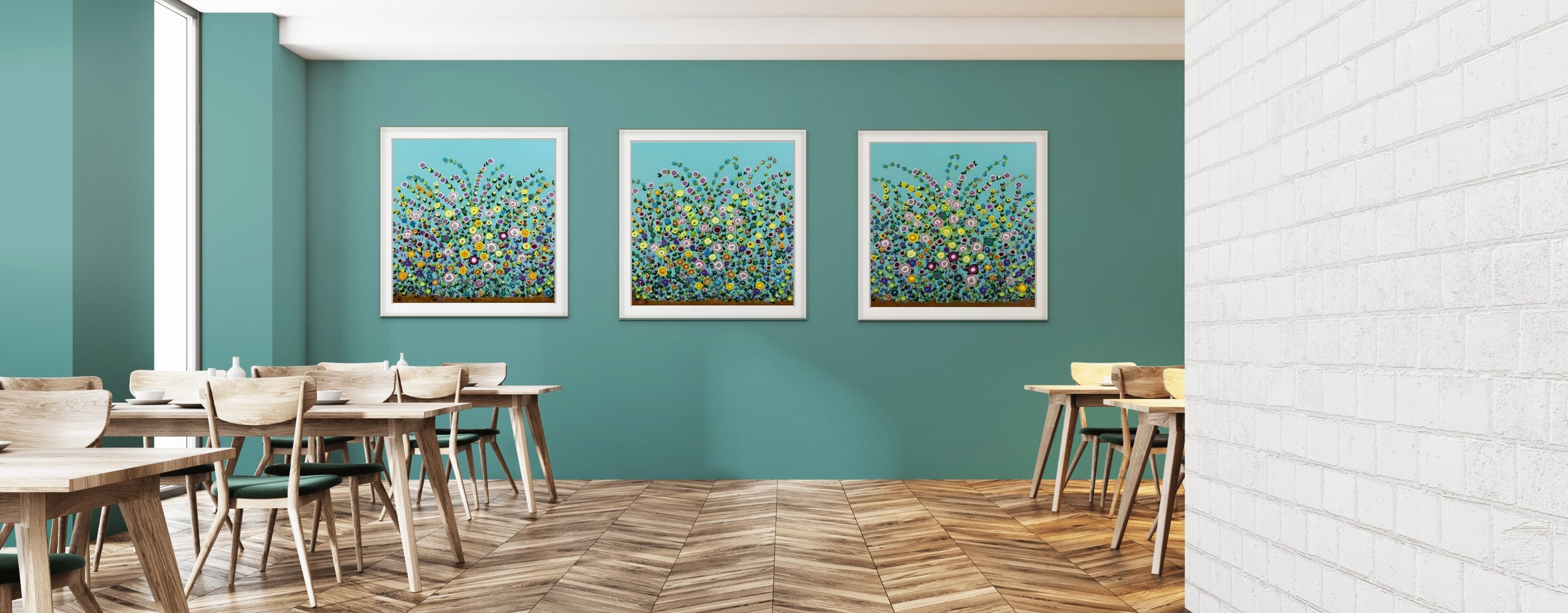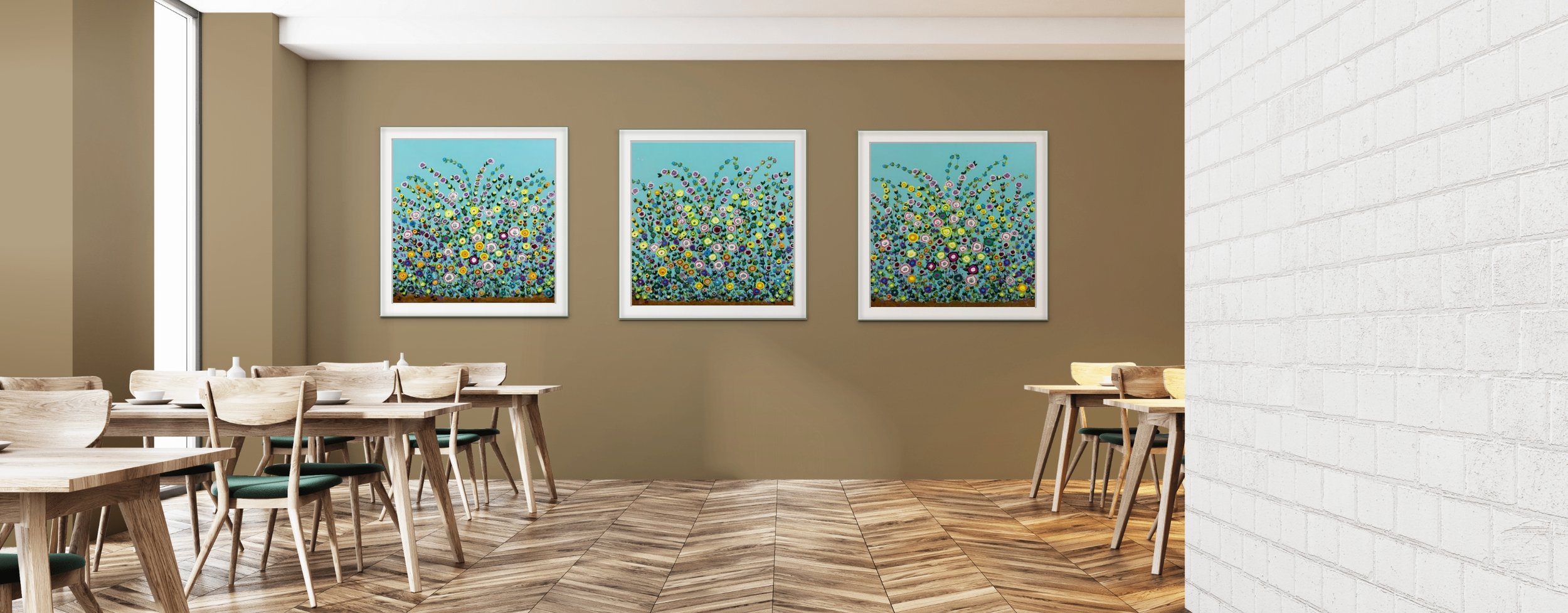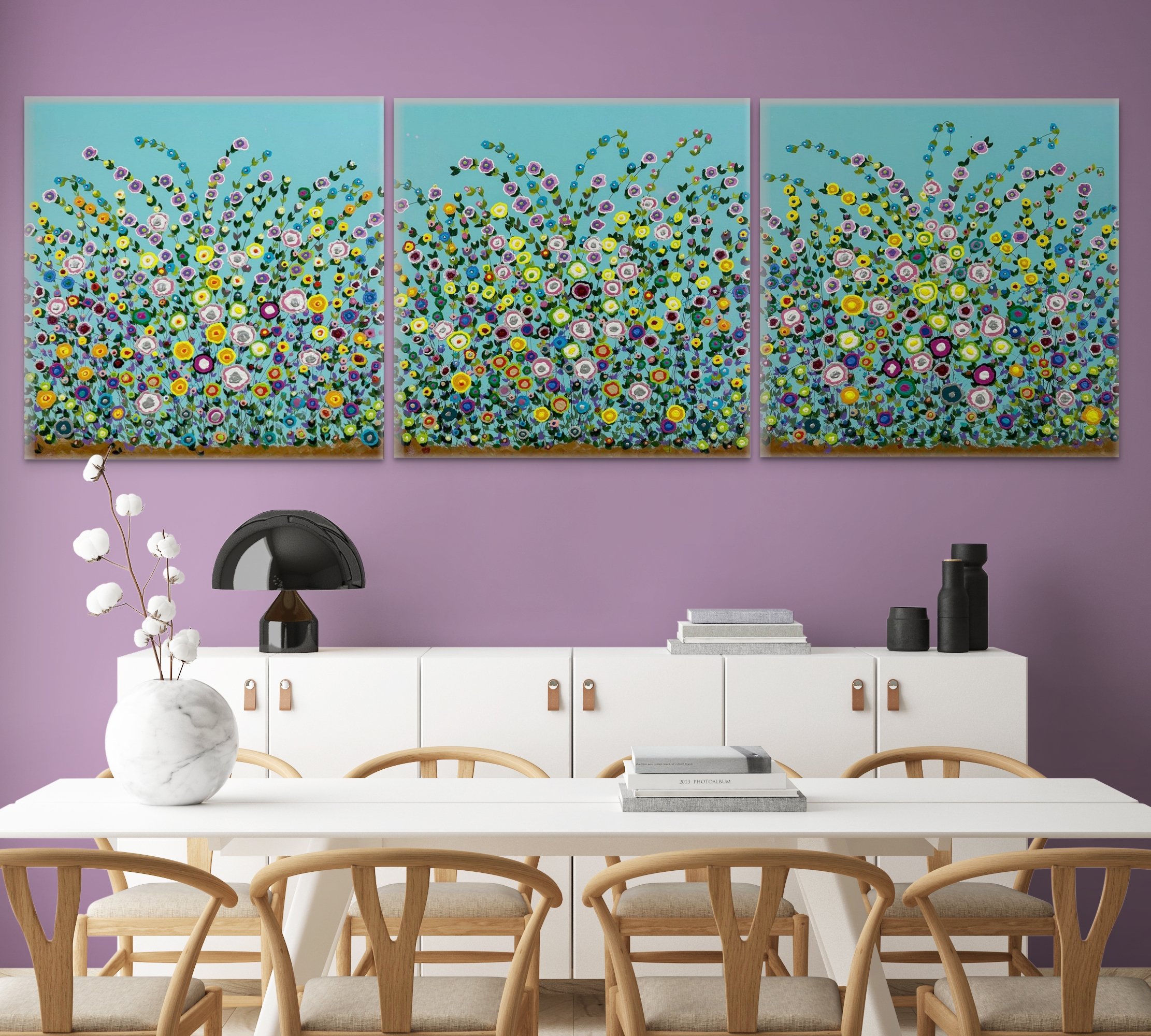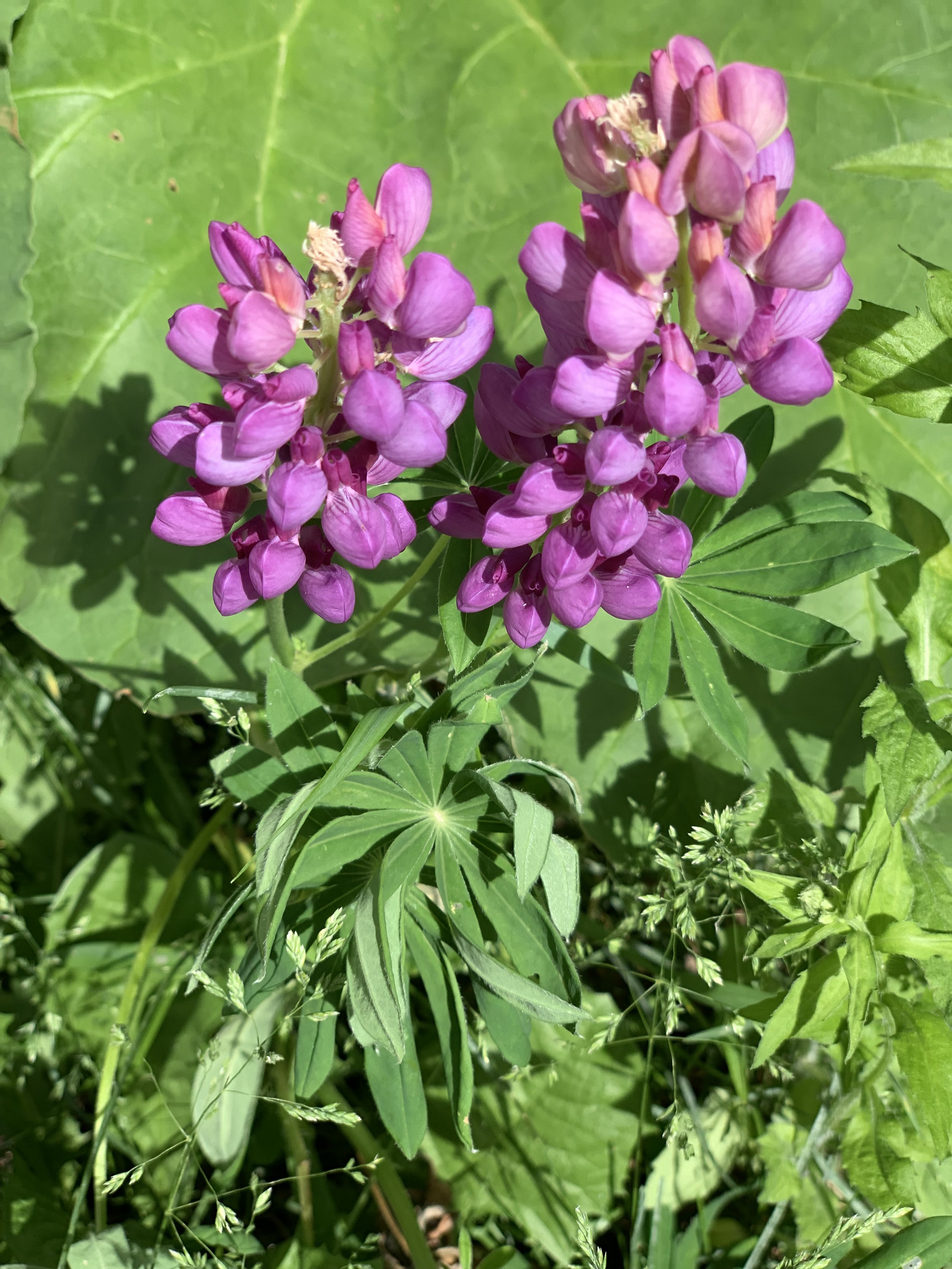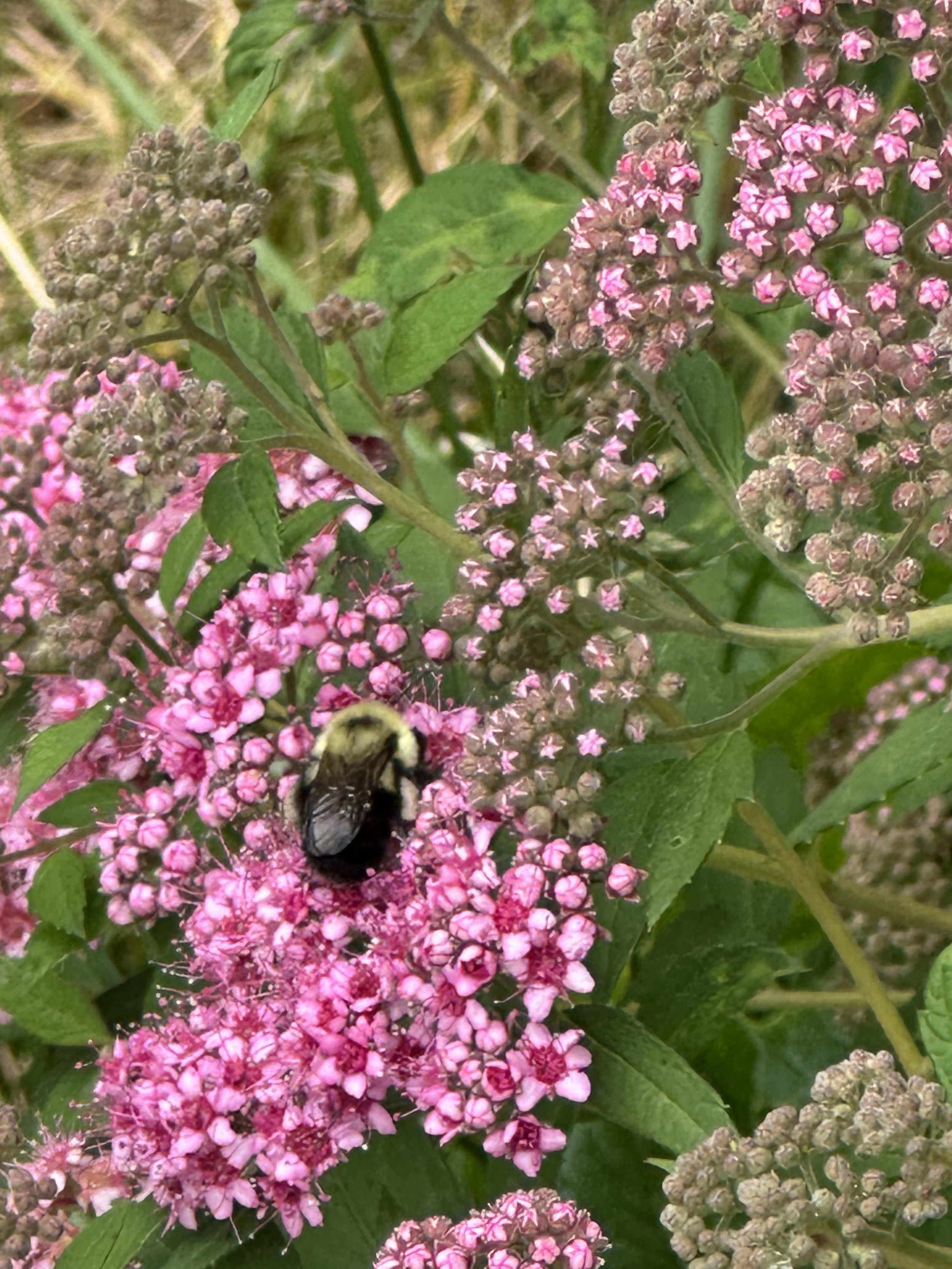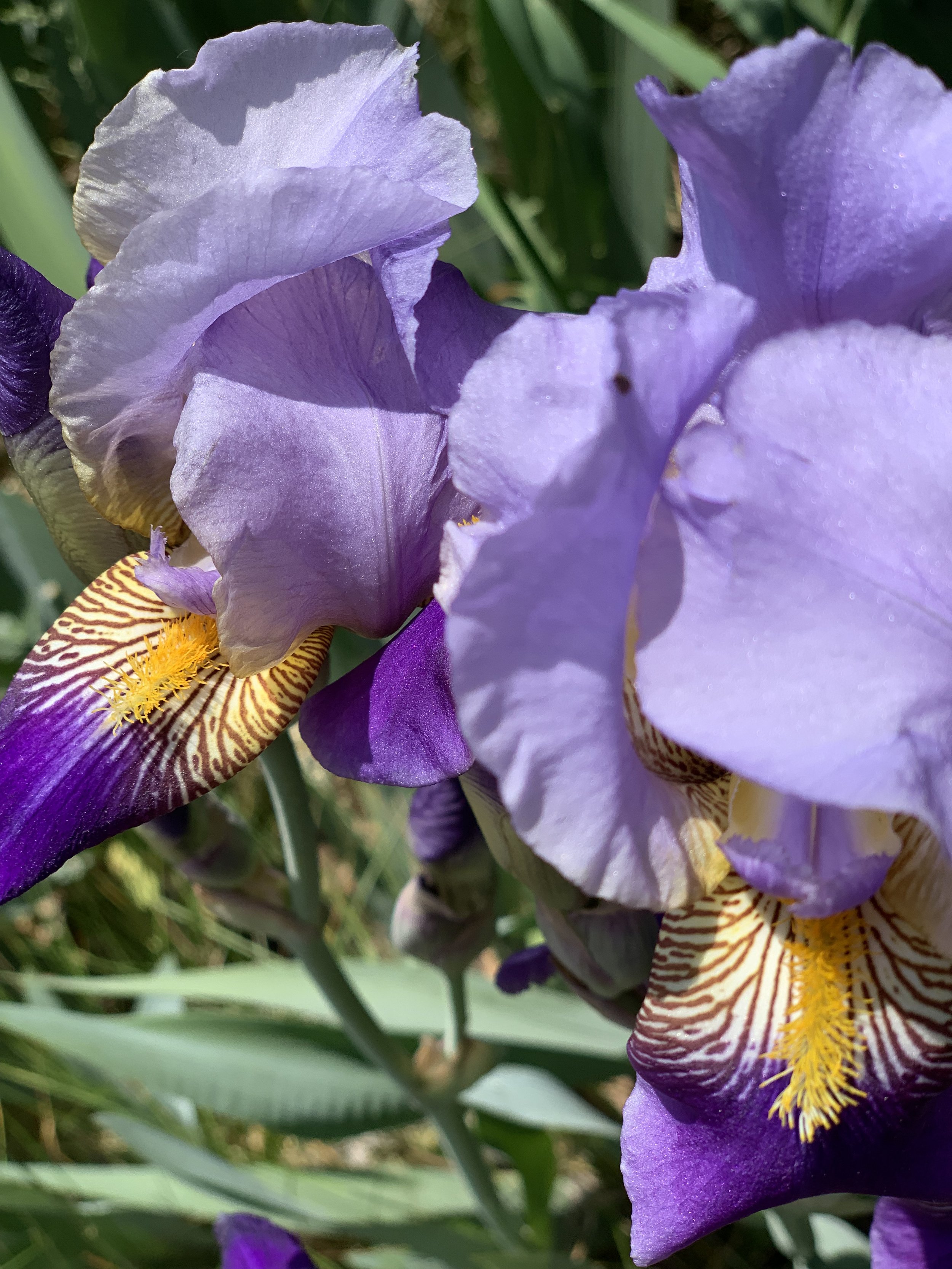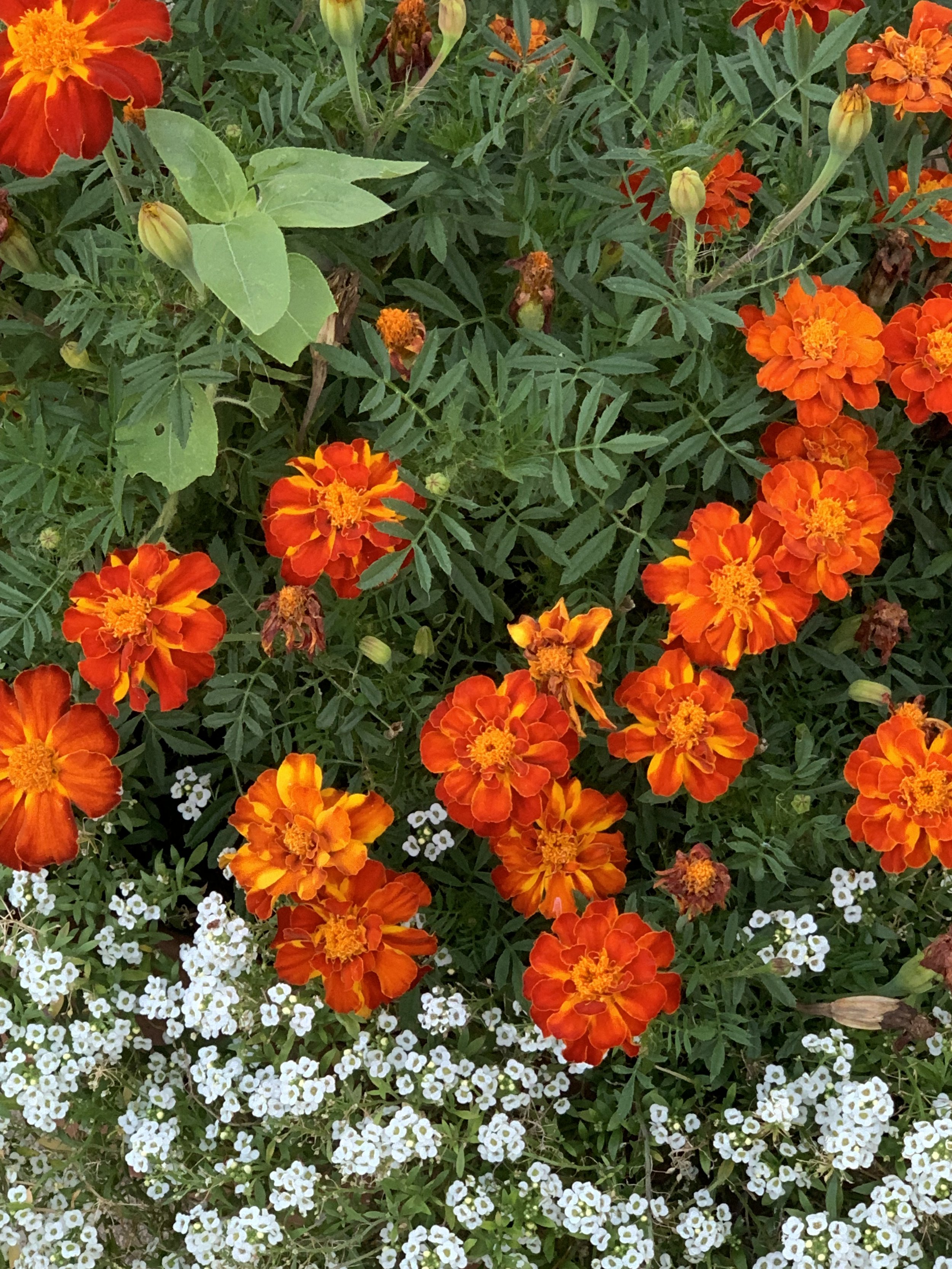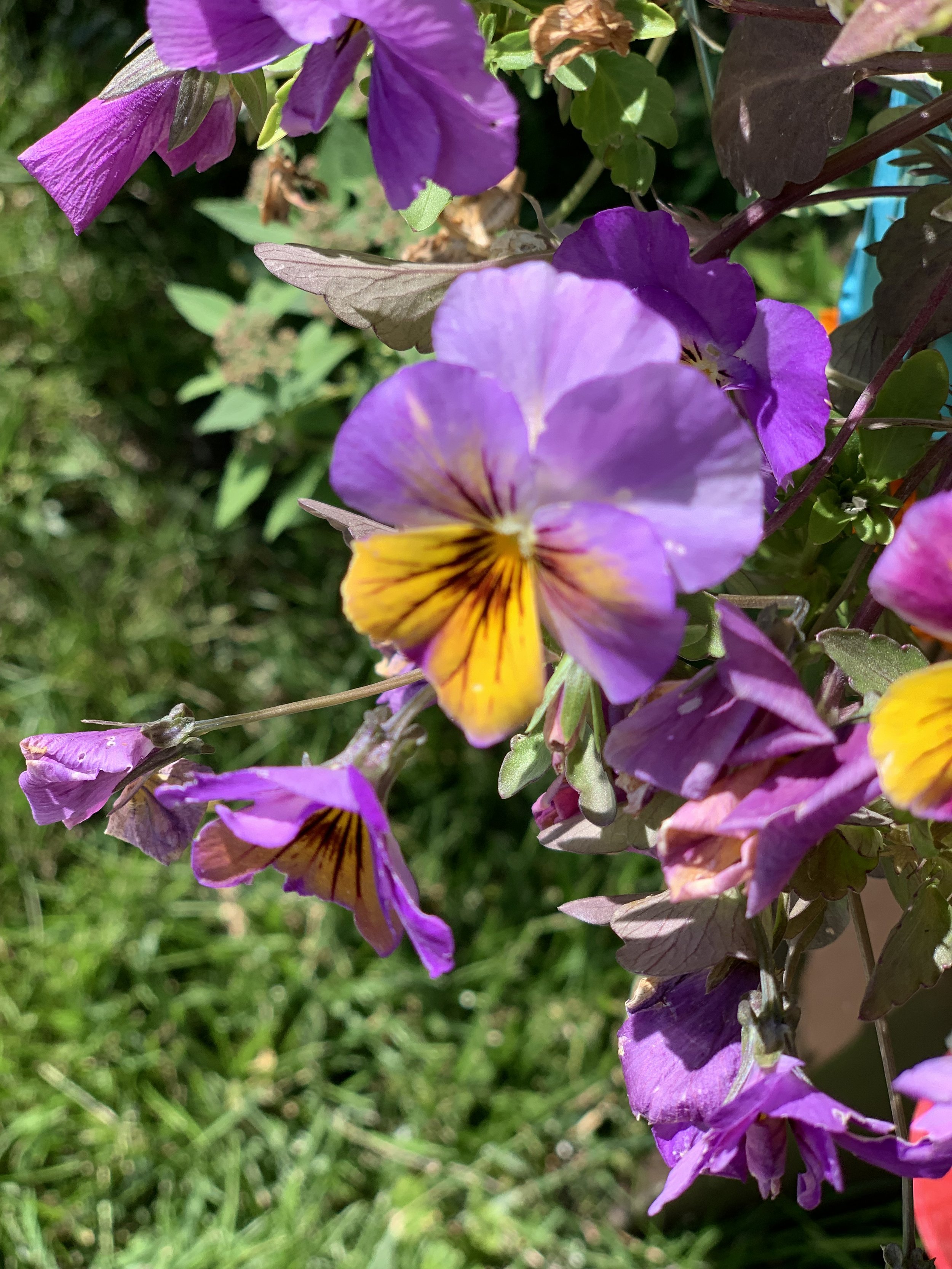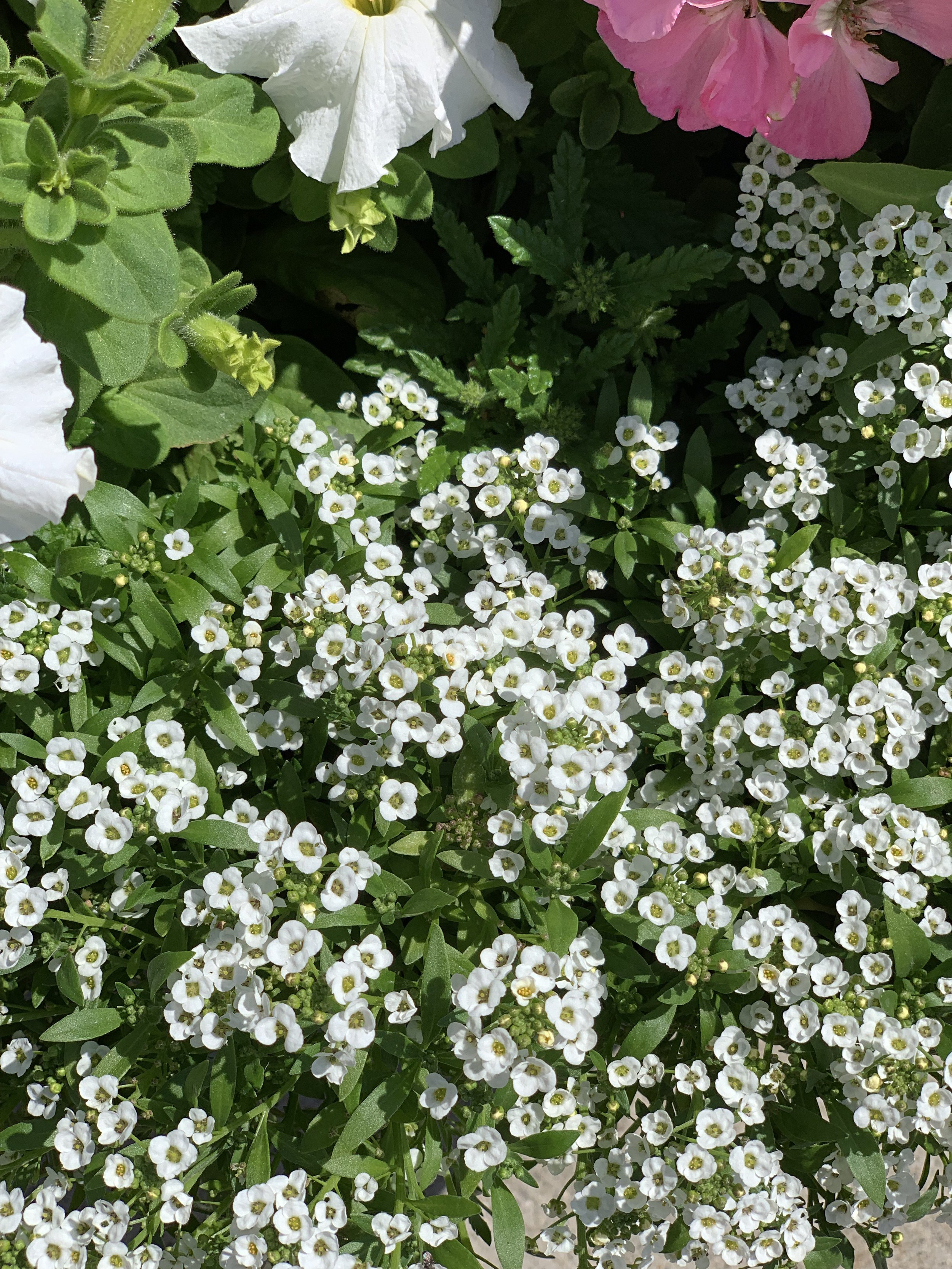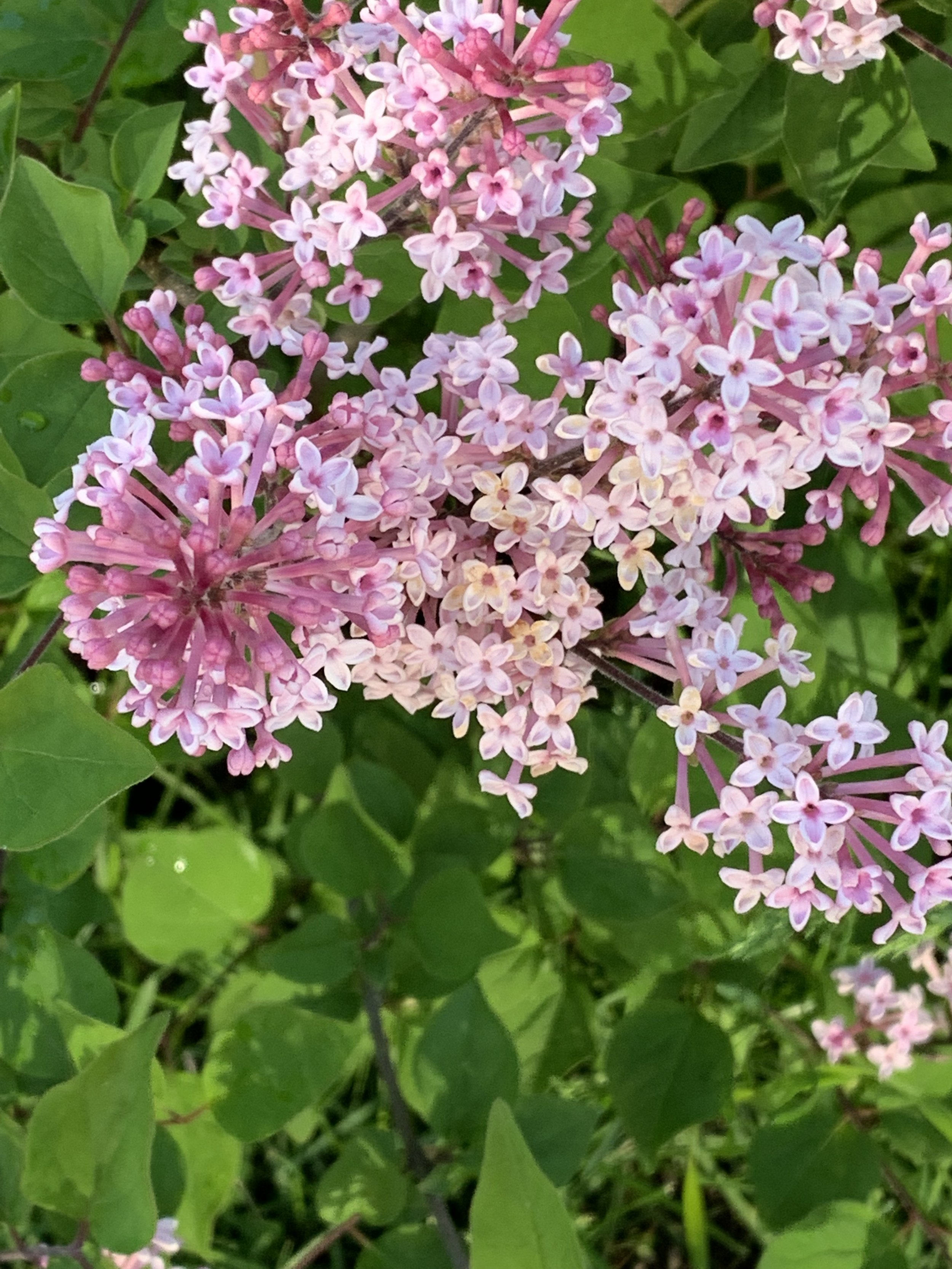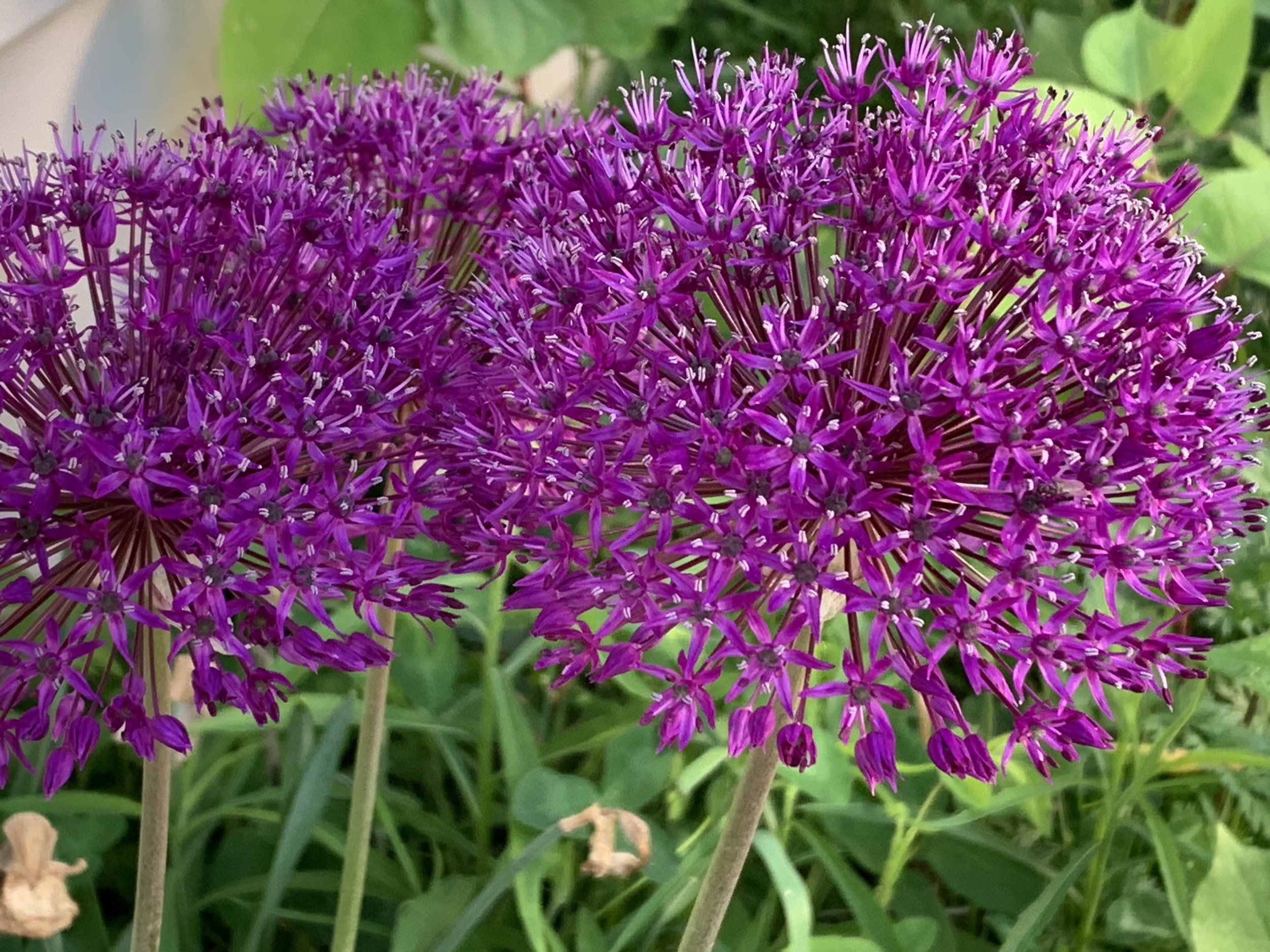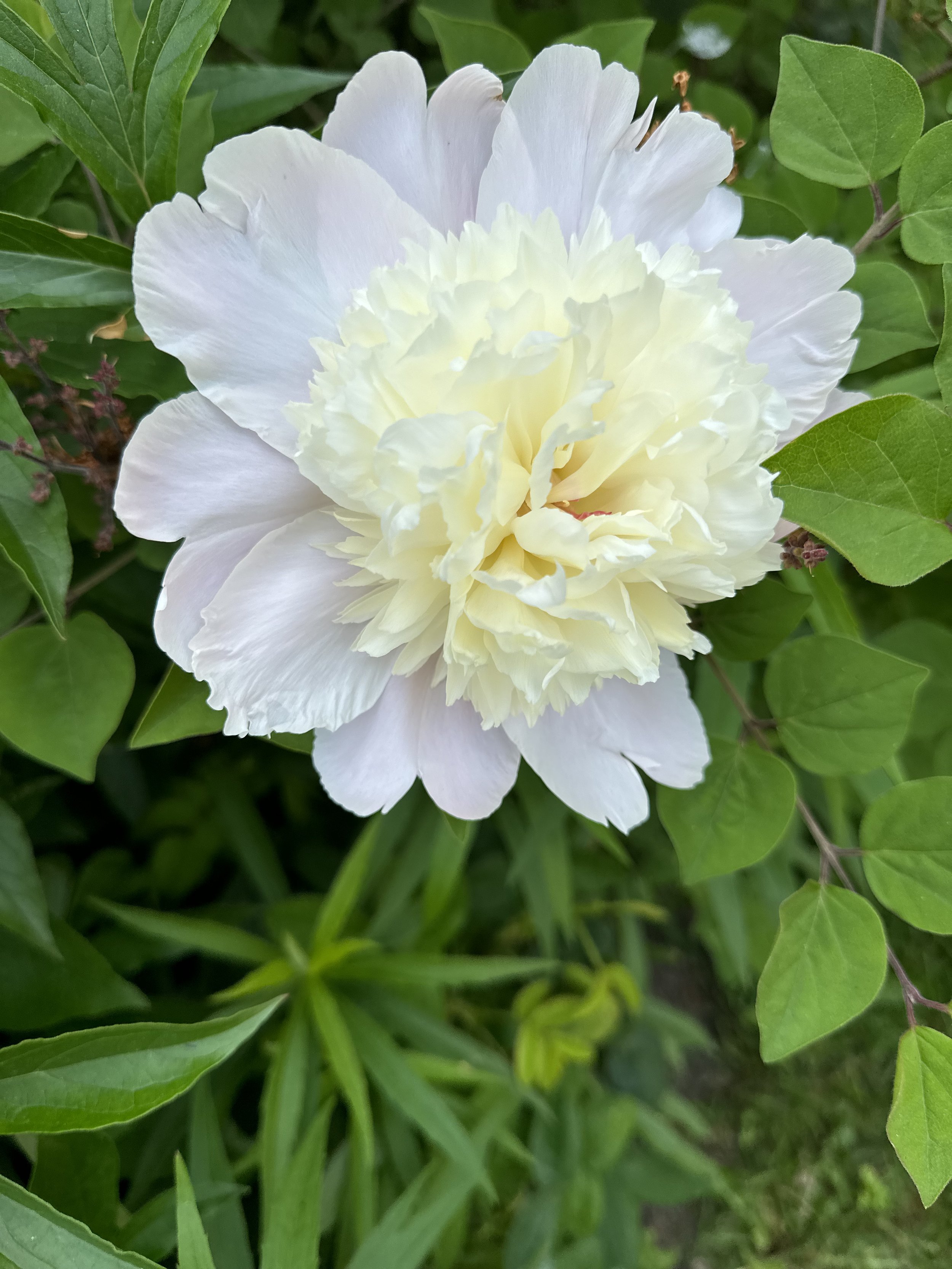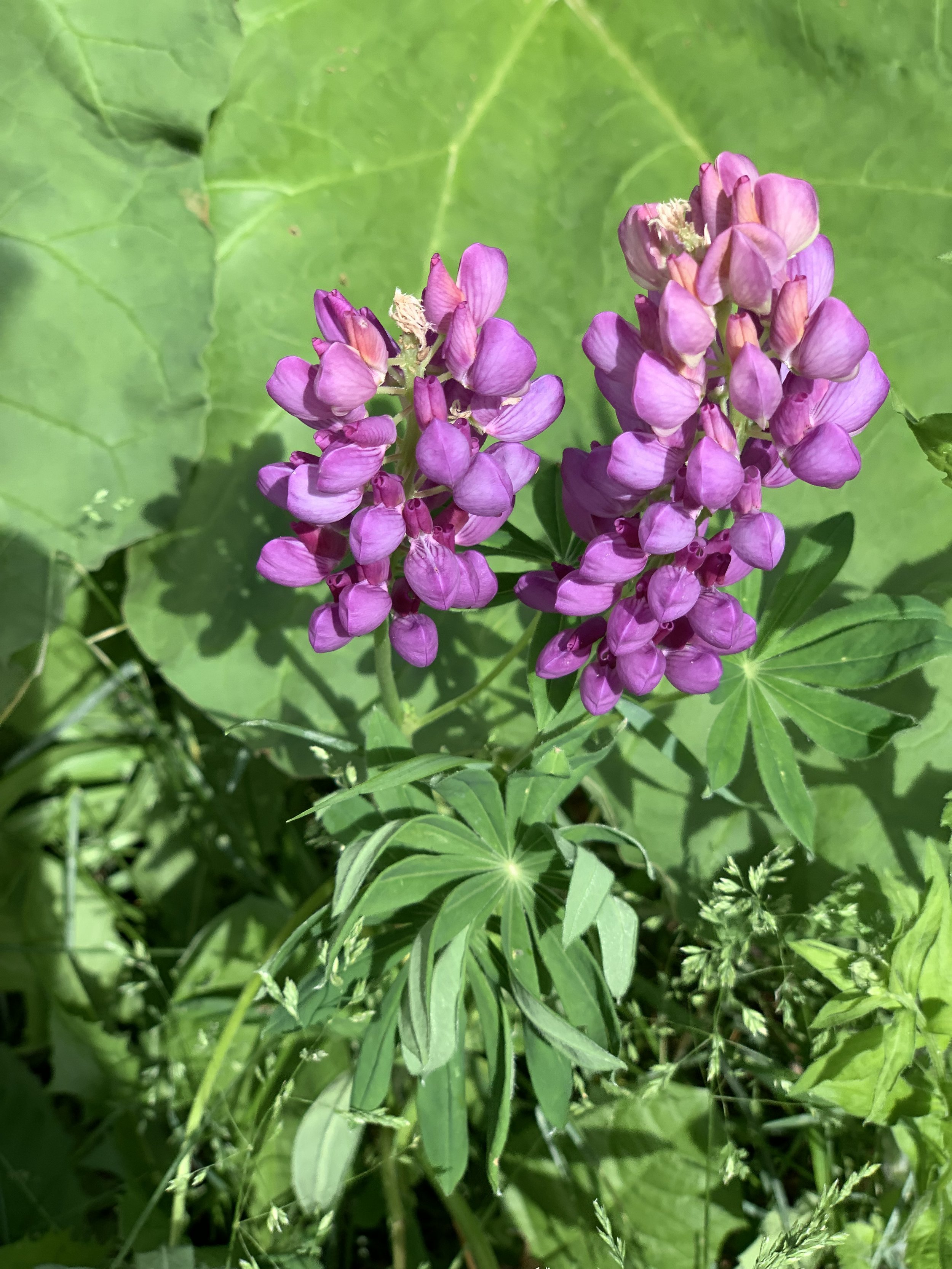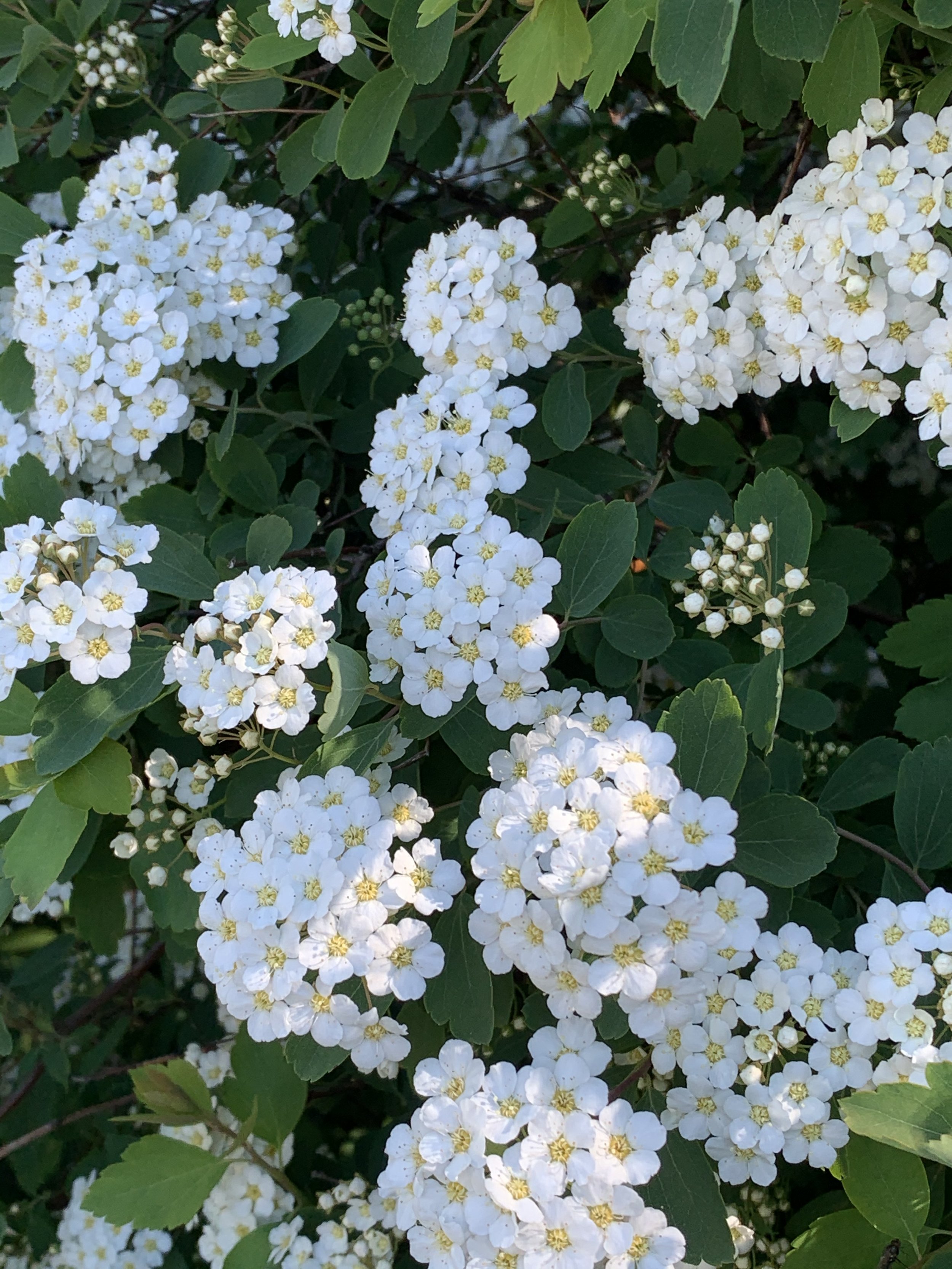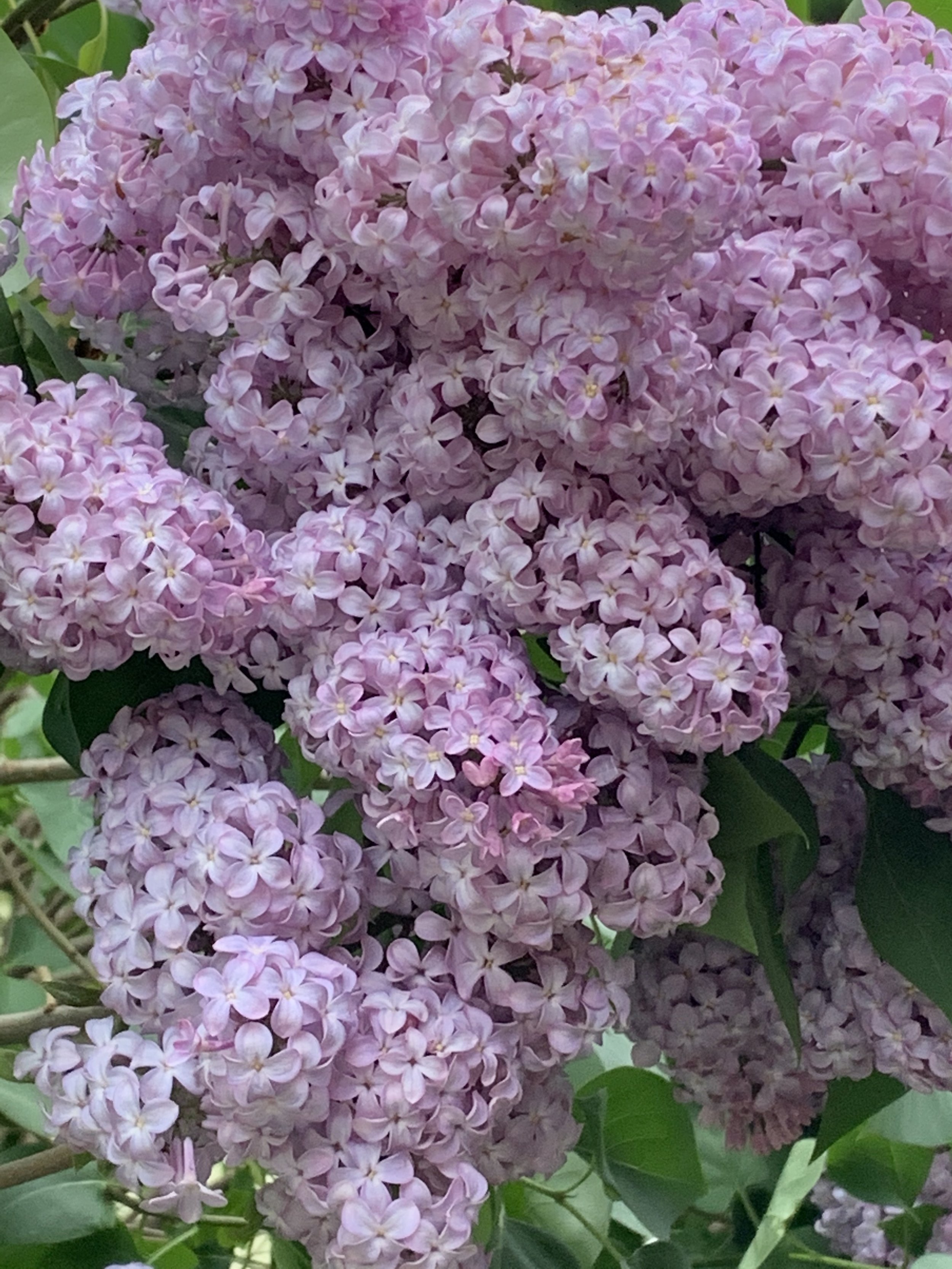More Evidence-Based Design Guidelines
There’s Evidence-based Design, and then there’s NOT Evidence-based Design.
Here are more evidence-based design art guidelines. Many of these guidelines come from “A Guide to Evidence-based Art” from The Center For Health Design, research by Ulrich and Gilpin, a case study on best practices in evidence-based design by the Mays Clinic at the MD Anderson Cancer Center, and so much more.
Waterscapes
They can be regional, generic, or seasonal. They should be calm and non-turbulent. Dramatic seascapes should be avoided, and flowing or trickling water might negatively impact full or non-functioning bladders.
Landscapes
They can be regional, generic, or seasonal. They should have visual depth or open foreground. Trees should have a broad canopy. Savannah and park-like landscapes are preferred by many. Vegetation should be lush. Empty park benches and sunsets should be avoided. The empty park bench might remind someone of loss and loneliness. A sunset might represent the end of life.
Figurative Art
Figurative art should be observational rather than interpersonal. This art should show smiling or emotionally positive faces. Figures can be diverse and appear in relaxed natural surroundings. However, figures that are too relaxed might negatively impact positive outcomes, especially for people with low motivation or in need of physical therapy.
Wildlife
Any wildlife imagery should be of animals widely considered non-threatening. Close-ups of large mammals looking directly at viewers should be avoided.
Still-life
Still-life can be used sparingly for variety.
Early in my evidence-based design career, I decided NOT to do Still-Life. I dislike drawing or painting Realism, especially as they did in the Middle Ages. I enjoy Impressionism and Expressionism, but I am an Abstract artist at heart. I have relatives who are super masterful at capturing hyper-realism. I greatly appreciate them and what they do, but it’s not anything I am interested in creating.
My studio is in Northern Michigan, and as much as I love all the wildlife, I prefer not to paint them. To capture their amazing beauty, I’ll leave that to my many local artist and photographer friends.
Figurative Art is another category I choose not to do. When I was a teen, people were often amazed at my ability to capture a person’s likeness with a Number 2 pencil. Again, it’s not something I am artistically interested in.
As an evidence-based design artist, I specialize in Waterscapes, Floralscapes (which AI says is a real word), and Landscapes. I like to go deep inside these categories and create art that strategically triggers the brain for health and happiness in others.
At first glance of this painting, it may seem as if there isn’t much deep strategy involved, but there is.
If you look at the sky, it’s a pretty blue, and it doesn’t shout or make too much of an impact on the brain. The sun and horizon are bright and cheerful, but their edges are soft and gentle. The evidence-based design purpose is to establish beauty without much impact and with no trauma. My goal was not to overwhelm the brain with too much beauty. The brain should register this area of the canvas as beautiful but mostly safe.
Photo of Lake Huron, one of the world’s largest lakes
Based on medical and scientific studies, hospital/medical facility patients also highly regard familiar nature scenes.
As our eyes see the water in the painting, there is a gradation of color. Very typical of Lake Huron (a familiar nature location for people in this area), the water remains mostly calm and non-turbulent.
I got trained to paint along New England's rocky, violent shores. Dramatic seascapes, which must be avoided in evidence-based design, are what I learned.
It was difficult, especially for my ego, but I chose to keep the water almost flat. I decided to use color (darker to lighter to almost aqua, much like Lake Huron) and brush movement to create water that is enjoyable to view but also calm and non-turbulent.
To create impact, I almost always choose abundant flowers (lush vegetation). Flowers almost always register in the brain as beautiful, representative of love, and safe. By de-emphasizing the sky and water (two areas of safety or potentially profound danger) and emphasizing the flowers (with little to no history of causing harm to humans), the overall composition helps to create feelings of well-being and happiness.
When I paint, my evidence-based design goal is not to create overwhelming beauty. This is what I was taught an artist should do. When I create evidence-based design compositions, my goal is to create art that triggers the brain to create dopamine (happiness chemicals).
Sometimes, I will add a little drama to the sky, as with this cloud below, which often appears like this over Lake Huron in the morning. Even though the cloud is loud, the colors are still soft and happy and the horizon line gently blends into the waveless water. The flowers, on the other hand, pop with color and a diversity of shapes of Impressionism.
Mackinac Memories by Dorothea Sandra, EDAC. Sold in 2025 to a collector in Fort Worth, Texas.
Why Did I Become Evidence-Based Design Certified?
A couple of years ago, I was on a very popular—and seemingly legitimate—New York City art website that was promoting art for health and healing.
Get this—misshapen and horrifically disfigured images; spread open naked human legs and rolls of unhealthy body fat; abstracts of daggers and dripping blood—all amazing works in their categories—just nothing I would consider appropriate for the elimination of stress or the recovery of human health.
This set me on a course for knowledge. I wanted to discover if I could actually learn to design/create with your health and healing in mind. I found The Center For Health Design with its excellent EDAC (Evidence-based Design) courses and certification. Imagine thousands of doctors, hospital administrators, health facility architects, hospital room designers, and many more professionals worldwide basing their creative/artistic decisions and designs on actual medical studies.
Instead of some untrained art critic or consultant setting the standards for art, health, and healing, I now had real medical professionals to learn from and follow. The EDAC exam was the most challenging test I ever took (and I’m a university graduate with high grades), but the knowledge I gained—which I now incorporate into my designs—was absolutely worth all the hard work.
It’s amazing how many people who buy my evidence-based designs tell me how this “evidence-based” art actually shifts their moods and creates positive and uplifting feelings/states of mind.
Here are four examples of what should never be promoted as evidence-based art for health and healing. Two of the pieces sold within minutes to a collector. They had merit, just not as evidence-based design art.
The first painting is titled Anguish and is part of a series I created about child abuse. This painting artistically reflects the mental and emotional suffering that children experience when they are not nurtured in healthy ways.
The second work, Killed Opportunities, shows how barren and tragic a child’s life becomes as opportunities for health and happiness are killed.
The third painting, Death By Power, reflects negative power winning. The face of a hideous creature looking at the viewer (top center) and a hand with the middle finger raised up (lower center) are perceptible.
In February 2025, I sold The Tempest, the fourth painting, again to a collector.
All four paintings have merit as works of abstract art. The art itself, however, does not de-stress or promote health and healing. In fact, it does the opposite.
Can you imagine the added stress and trauma of looking at any one of these paintings while recovering in a hospital bed? Before training to become evidence-based design certified, I wondered why influential people in the art world were calling paintings like this art for health and art for healing. It just didn’t make any sense to me.
Here are more beautiful paintings that would not be considered 100% appropriate evidence-based designs. Some I sold, some are for sale through a Paris, France international gallery, my website, Galleri Soho in Sweden, and more.
When I create evidence-based design art, I use design suggestions and strategies based on credible scientific and medical research. I get my information from a variety of sources, but I enjoy and value the trainings (which are required for EDAC recertification) at the Center For Health Design and their journals and repository information.
There’s a difference between pretty art that makes us feel happy and art that triggers our brains to feel happy based on medical and scientific research. Evidence-based design is that kind of art.
Is Evidence-Based Design Totally New?
Is Evidence-Design Totally New?
If you asked the 6th BCE Greeks of Epidaurus, they might take you to one of the most celebrated healing centers of the classical world—the Asclepieion hospital. In their hospital, patient rooms faced eastward. Why? It is believed the rooms were intuitively designed and placed toward the sun to promote healing.
Many centuries later, many movements from different countries came together in the 1970s to create a new field called evidence-based design.
Who are the people whose forces created this new discipline? Doctors, Scientists, Architects, Interior Designers, Psychologists, Sociologists, Anthropologists, and many others.
The Healing Window by Dorothea Sandra, EDAC, 36”x48”
This artist’s journey into Evidence-Based Design
Photo from the back of McLaren Northern Hospital, Petoskey, Michigan
I am known by many titles in the art world: Artist Of Happiness; a modernizer of traditional woodland compositions; a Great Lakes artist; a 21st-century experimental artist; creator of the evidence-based design collection, Symphonies Of Love; creator of the Smart City Art Collection; and more.
At the beginning of my evidence-based design artistic journey, I chose to create a painting depicting a view from a hospital room. The background of The Healing Window features Little Traverse Bay, as seen from the back parking lot of McLaren Northern Hospital in Petoskey, Michigan.
While composing this painting, I imagined myself in one of the patient rooms at McLaren Northern, looking out the window.
I also imagined myself in a patient room or in a healthcare lobby or a waiting area.




Artists always have lots of choices to make. Early in my evidence-based design floral art career, I chose creating happiness (triggering dopamine) over painting realism. My reason? I figured I would have more power to create happiness if I had more artistic power of the flowers. Not only did realism limit my ability to create happiness (dopamine), but according to medical and scientific research, traditional still-life wasn’t an art category most favored within evidence-based design.
So, is evidence-based design totally new? Yes and no. The flowers in this artwork are modern, cheerful, uplifting, and based on current evidence-based design best practices. However, I also wanted to pay homage to the accomplishments of those who came before us by incorporating elements that, especially in the design texture of the vases, evoke a rough, ancient Greek Asclepieion aesthetic.
Inside Evidence-Based Design Art
If you walked past this painting in a healthcare hallway, would your brain receive a message of love without being overly impacted or stressed by the art?
I do not have the expertise of a neuroscientist or medical researcher or practitioner, but I do LOVE to study their evidence-based design results and find ways to experiment with them in art.
Symphonies Of Love Number 12 by Dorothea Sandra, EDAC
This painting was strategically and deliberately designed using evidence-based design principles and guidelines.
My first goal for this painting was to create a soothing, stress-free background. A large body of research is consistent with the proposition that humans are hard-wired to appreciate and benefit from exposure to nature. I chose the color green for the background because green gardens and parklike settings are acceptable in evidence-based design. I could have added some dabs or splatters to the background, but I decided a super smooth, flat background would create beauty without impact or stress.
My next goal was to decide on a composition. I chose the shape of a heart because I wanted to very clearly and very powerfully create a message that said, “You are loved.” I find too much evidence-based design art today wispy and without form. I think those designs are truly wonderful and quite celebratory of nature, but sometimes humans—especially children—need a clear, up-in-your-face message, especially of love.
Can you imagine a child in this patient bed? I think an image of a heart outperforms a typical biophilic design when it comes to encouraging feelings of love, safety, and care.
My third goal for this painting was to add some fine art flair. Nationally and internationally, people have begun to recognize my signature style of making flowers and they like them. As I am forming the flowers, I use a variety of art techniques to build in and create feelings of happiness and joy.
Keeping with my evidence-based design goal of beauty without impact, I very minimally added a pistil tip to each flower.
If you walked past this painting in a healthcare hallway, would your brain receive a message of love without being impacted or stressed by the art?
Today’s Mood Busting Art
Is it possible to bust through a bad mood with art?
Garden Holiday by Dorothea Sandra, EDAC
As many of you know, we live in “interesting” times. So many people today are stressed or sad or deeply troubled by something or someone. I like to use my art to fight against this by creating credible pieces that bust through these moods and create upward movement feelings of happiness and hope and joy. Using well-researched guidelines, I like to reach inside the brain through art and help shift a negative mood into something positive.
From the 1960s until today, serious researchers with very serious studies…from different countries…from different multidisciplinary fields have converged to create a new field of art called Evidence-based Design. According to the National Library of Medicine at the National Institute of Health, “Evidence-based design is scientific analysis methodology that emphasizes the use of data acquired in order to influence the design process in hospitals. It measures the physical and psychological effects of the built environment on its users.”
Today, evidence-based design isn’t just for hospitals. It’s for all of us. It is for many of the places humans go. What is my role in all of this? A very small one—but I think an important one. Today my art hangs in hospitals, businesses, organizations, and homes. Using my artistic talents and evidence-based design training and certification—just as I did in this triptych art called Happy Garden—I very deliberately and very strategically create happy, happy art for today’s built environments.
People often ask me where I get my inspiration for this style of painting I call Bubble Art. These photos of flowers come from just two of my yards in Northern Michigan. I live in a super clean, healthy environment and inspiration always seems to be all around me—everywhere I seem to look. Nature is a truly powerful healer. When we can’t be out in it, putting art on our walls that captures nature’s fun and beauty often helps.
(I keep 100 percent pesticide-free yards with many bee and butterfly friendly plants. The bees this years are plentiful. I have even seen up to 8-10 bees on one bush.)
In a Garden Holiday, I used my evidence-based knowledge to select the cheerful background color. I painted the flowers in soil to give the artwork a rooted to our life-giving earth feel. Flowers and stems are never similar or boring in nature, so I gave this work an abundance of fun-filled stem twists and turns, pops full of flowery color, and many hints of humor.
If you would like to learn a bit more about evidence-based design and see how I applied it to my art, my new book, 100 Days Of Happy Happy Art, Evidence-Based Design, is available through Amazon.














































